Tom's Hardware Verdict
Verdict
Pros
- +
Full power at 47 degrees Celsius
- +
High Performance
- +
Goold build quality
- +
Efficient
- +
Lots of RGB lighting modes
- +
Fully modular
Cons
- -
No Over Temperature Protection
- -
The fan profile could be tuned better
- -
3.3V transient response
- -
Not compatible with the alternative sleep mode
Why you can trust Tom's Hardware
Like its large brothers with 1050 and 1200W capacities, the Thermaltake Toughpower Grand RGB 850W Platinum offers high performance and features lots of RGB lighting modes. All in all, it is a good power supply equipped with a reliable and modern platform, provided by Channel Well Technology. If you don't care so much about the RGB lighting, you can also take a look at the Corsair HX850 and the Seasonic Focus Plus Platinum with a similar capacity.
Thermaltake's Toughpower Grand RGB line consists of three models, which have high capacities, so they mostly address potent systems and users that don't have a problem spending a little more to get a high-quality power supply, which features RGB lighting. In PSUs, typically, the focus should be provided in spending every cent to improve the build quality and not on aesthetics. However, still, some users want even their PSU to look nice, or else there wouldn't be a whole market with such products.
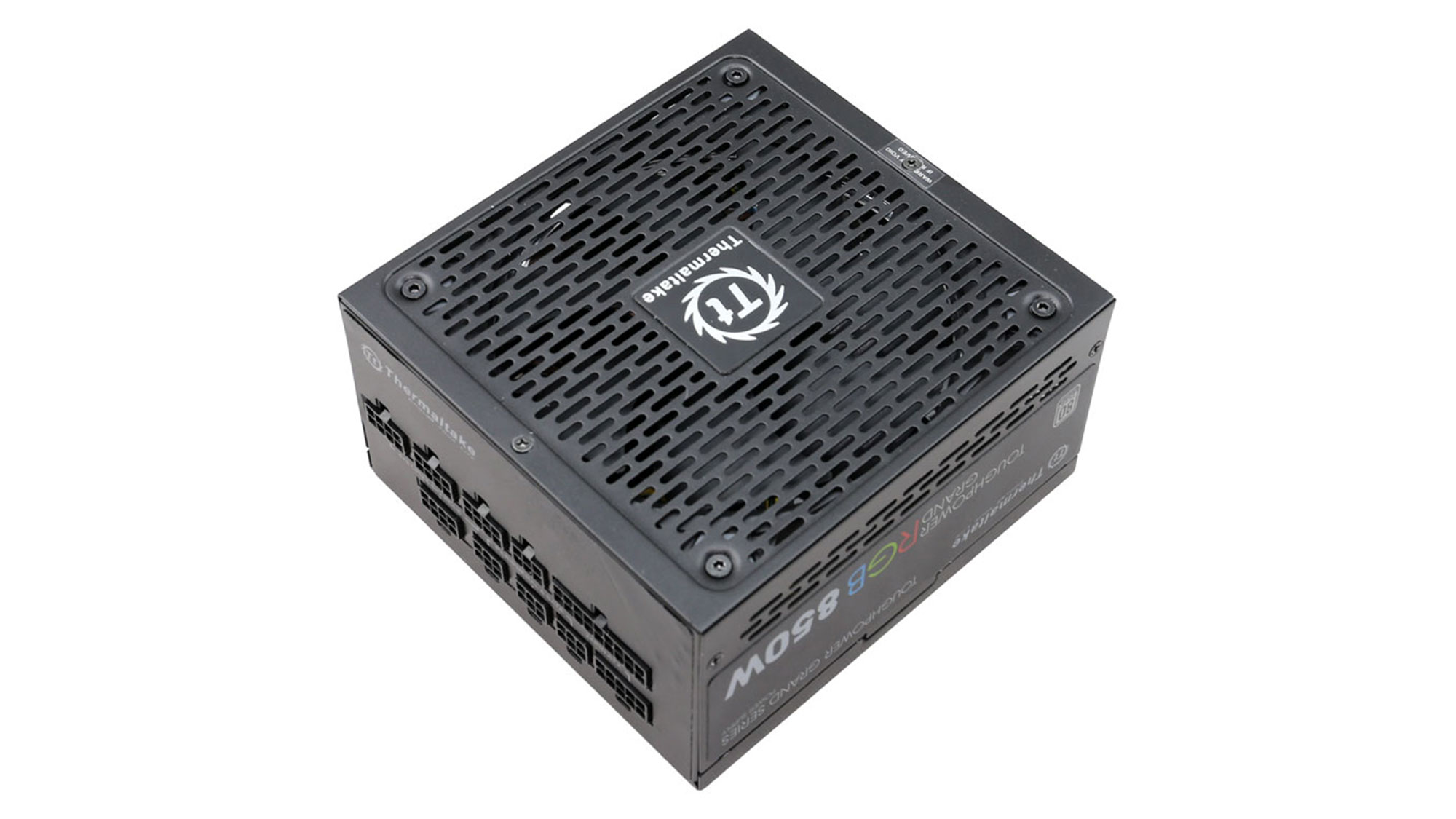
Product Photos
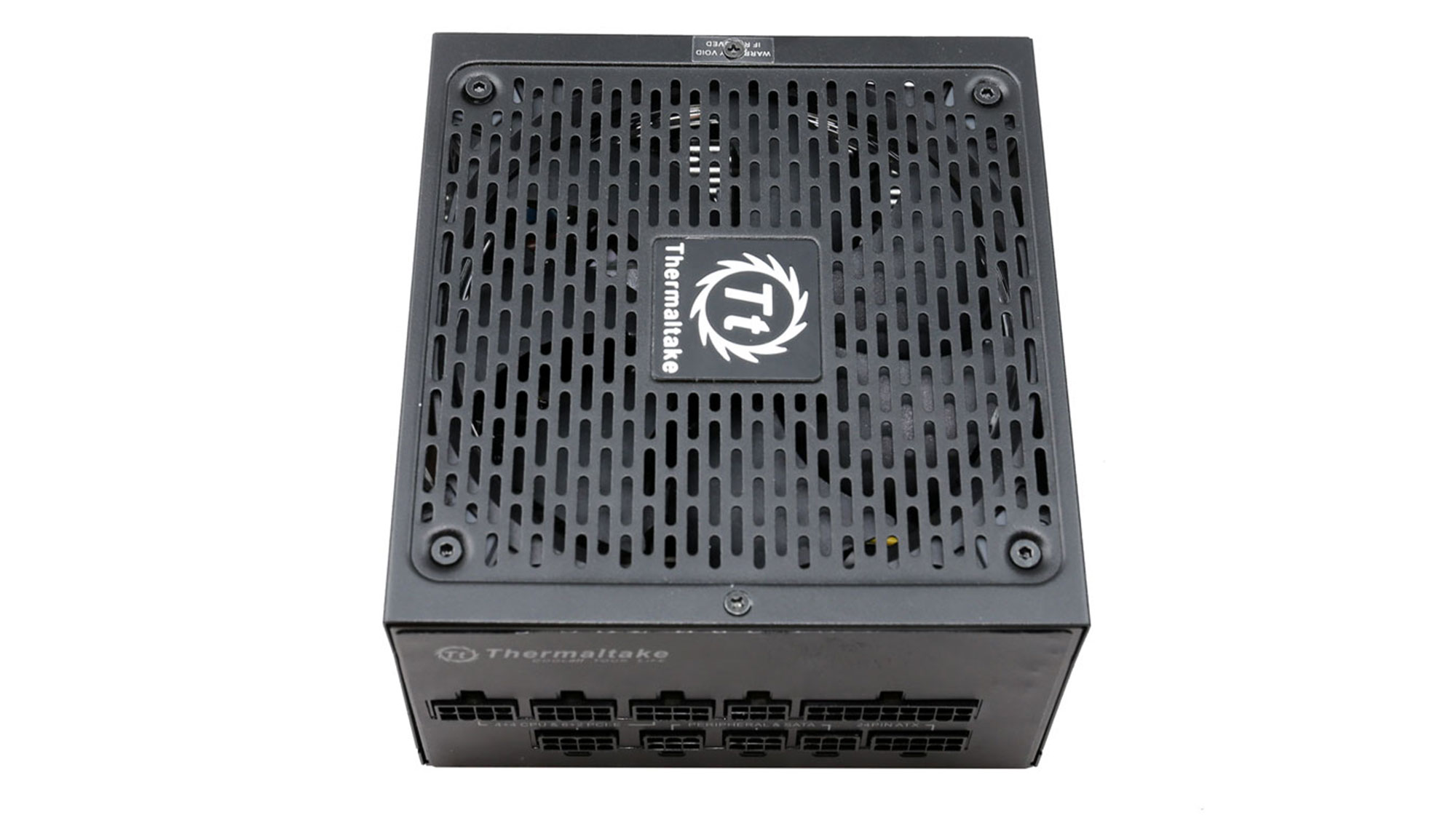


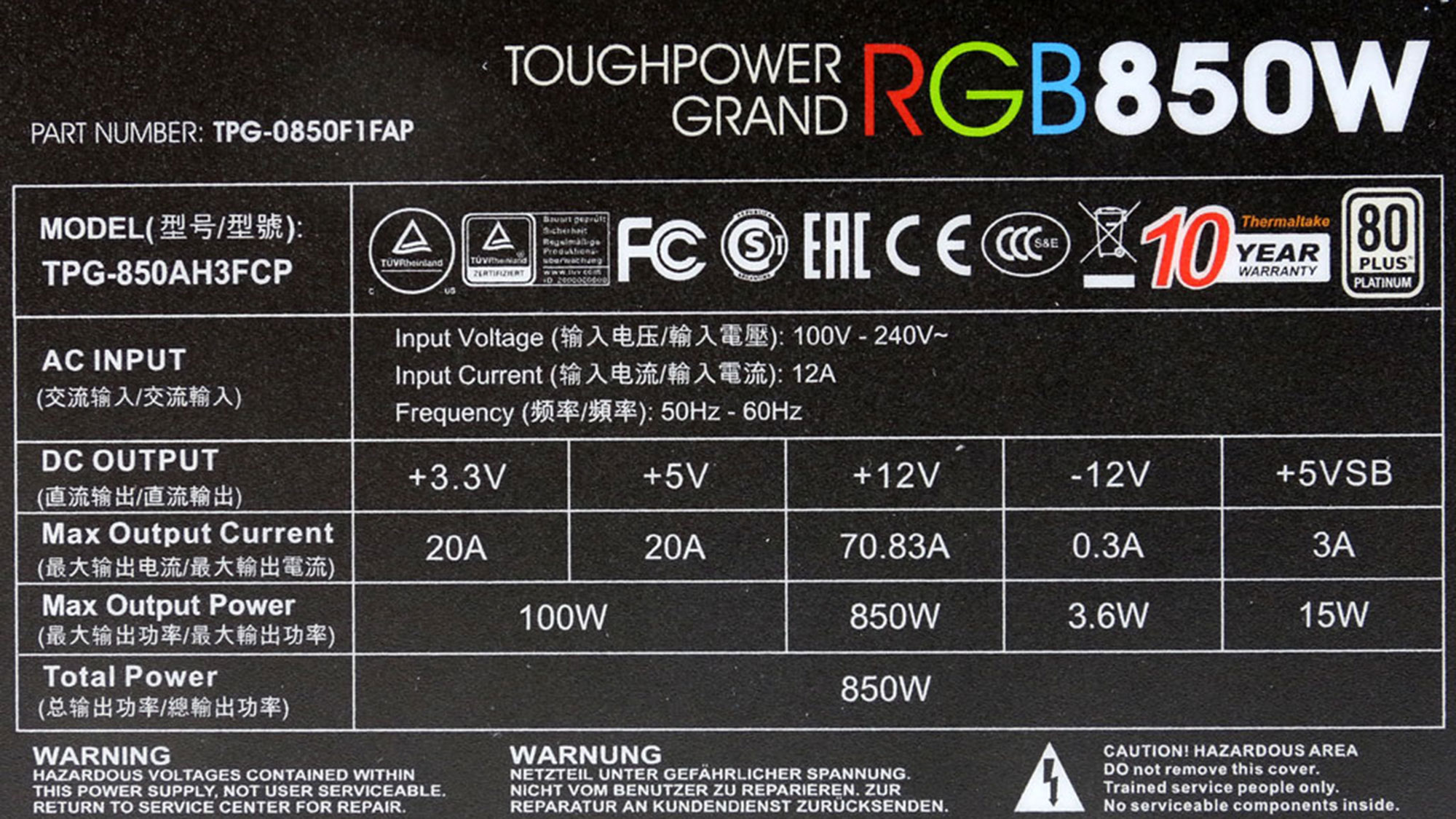
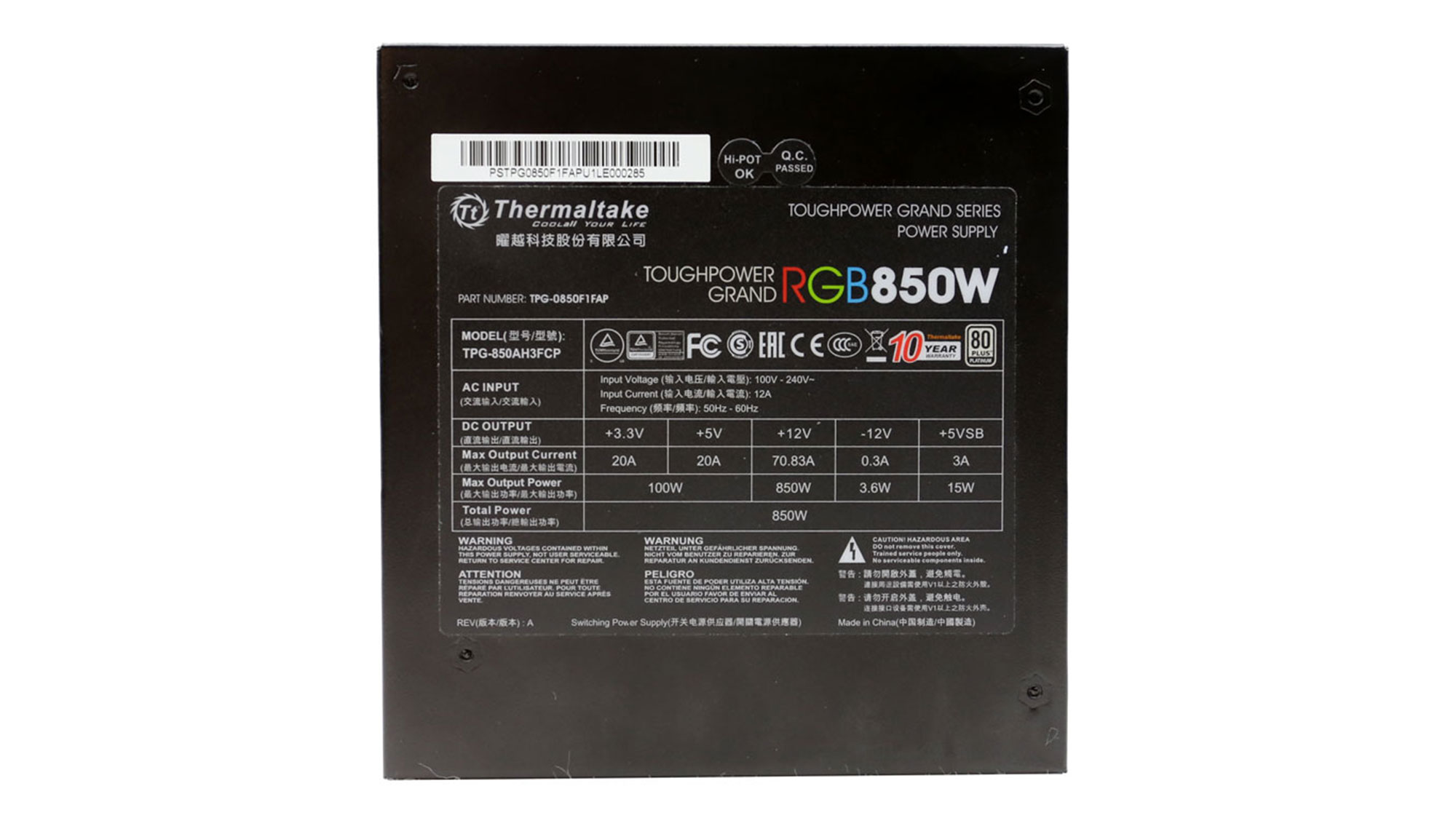

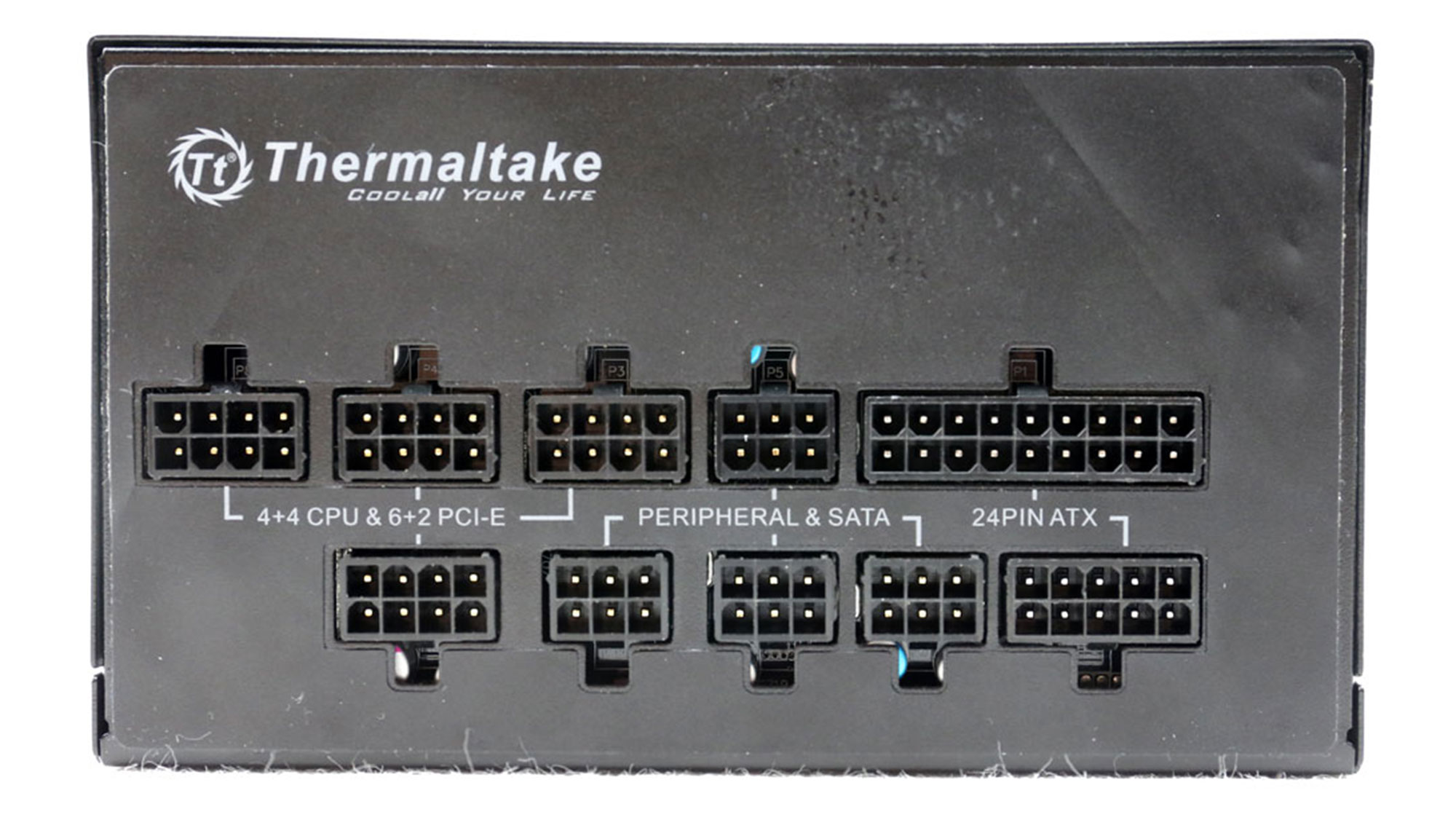
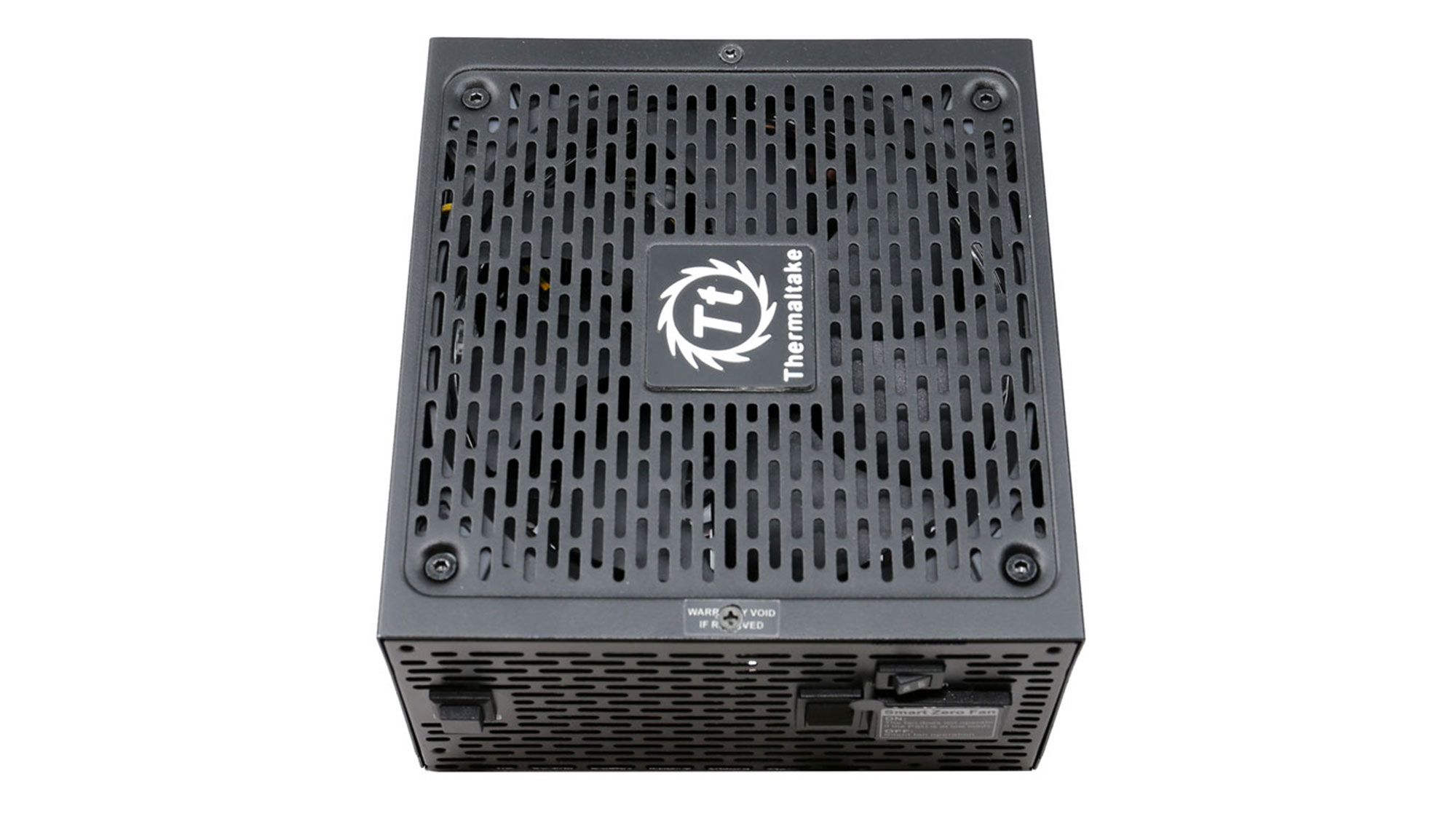
The Toughpower Grand RGB 850W Platinum has small dimensions, and it is fully modular. The external design easily stands out from the crowd, and besides the RGB lighting, the ten-year warranty is a strong marketing point for this product. Thermaltake also states that the PSU uses 100% Japanese capacitors. Still, we will have to take it apart and check on the model number of those parts, to figure if they belong to high-end or mainstream lines, with the latter not being so far away, in performance terms, to the corresponding Taiwanese and Chinese caps from Teapo and Elite.
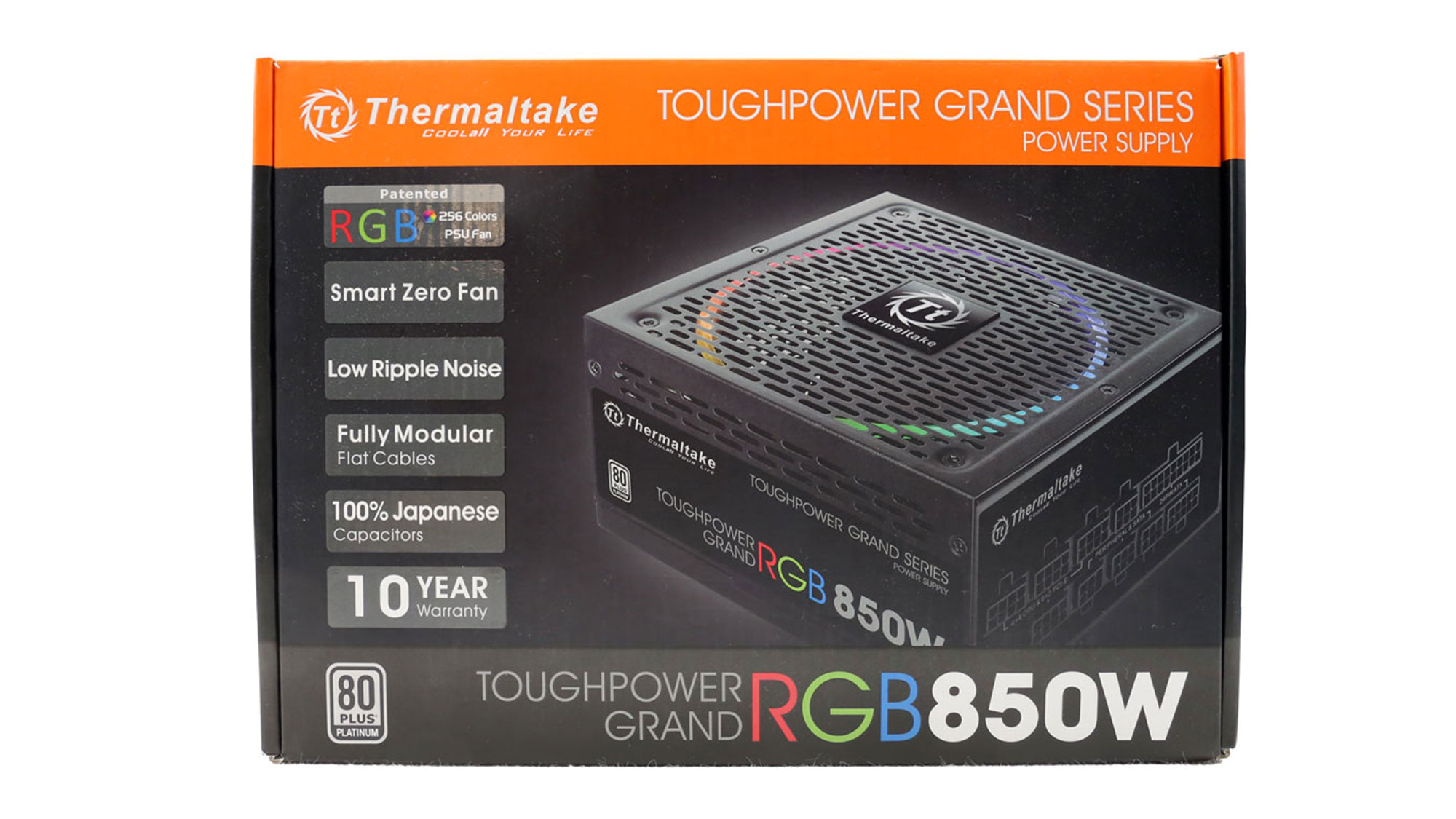

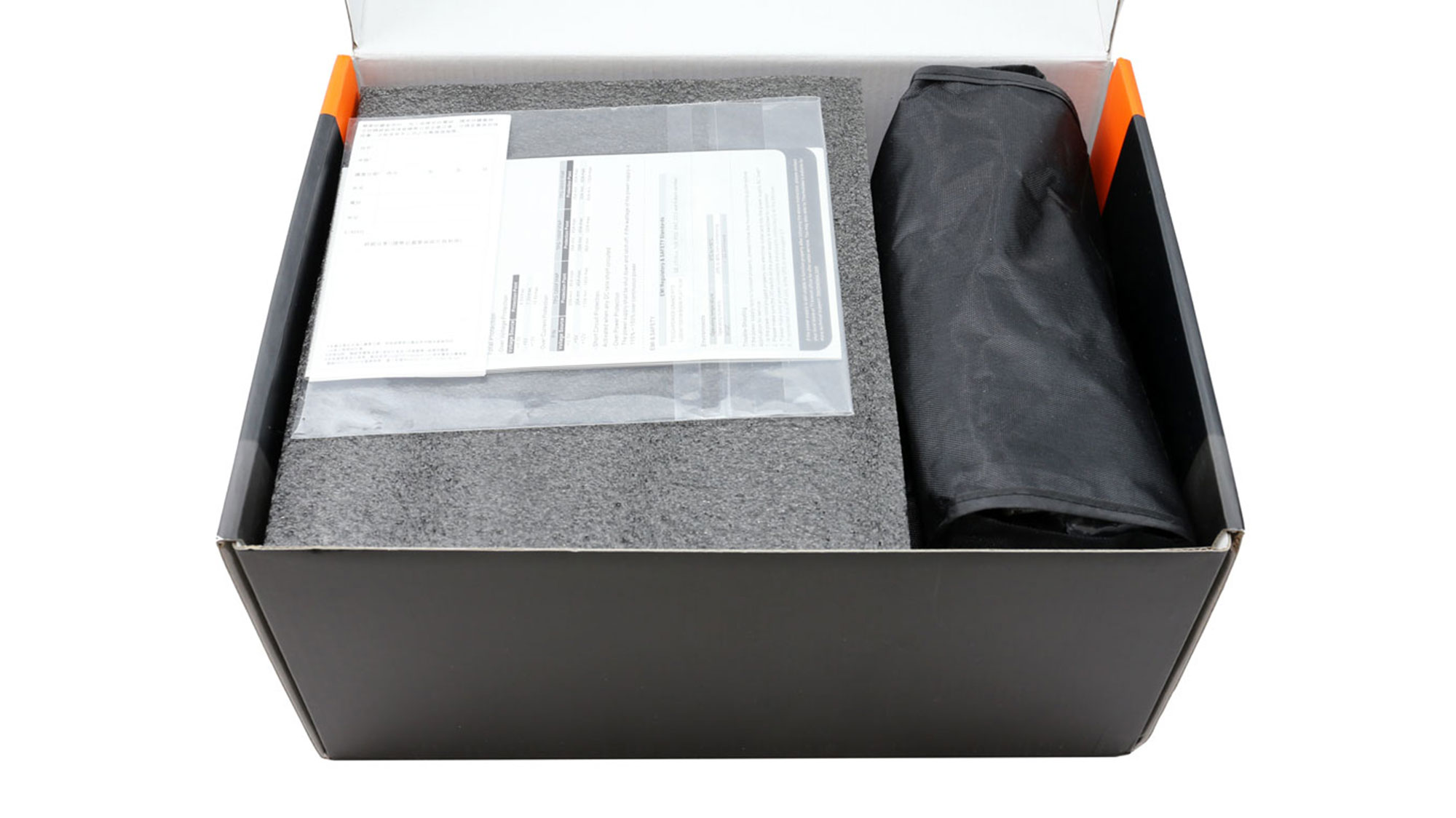
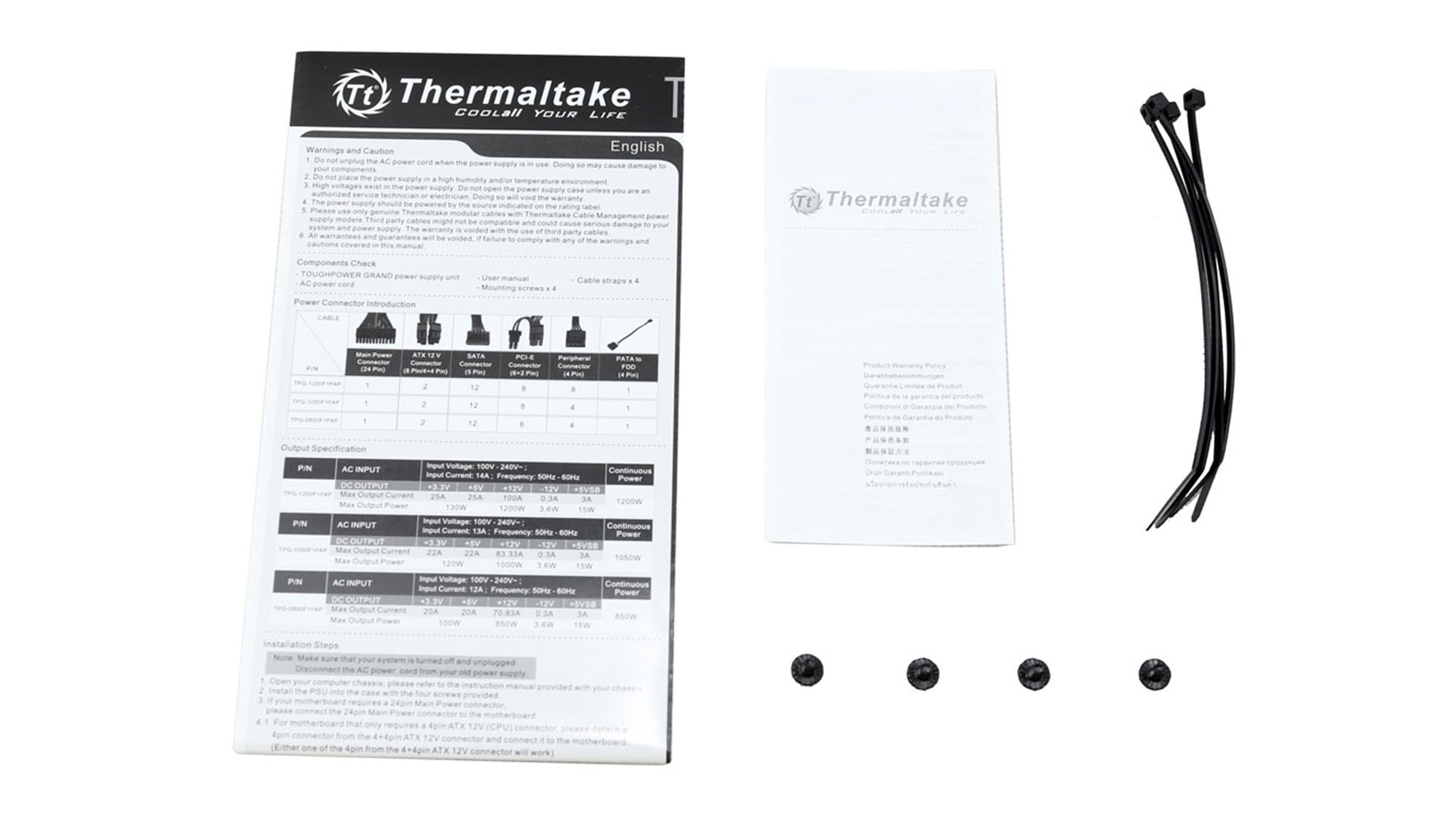

Specifications
|
Manufacturer (OEM) |
CWT |
|
Max. DC Output |
850W |
|
Efficiency |
80 PLUS Platinum, ETA-A (88-91%) |
|
Noise |
LAMBDA-S++ (30-35 dB[A]) |
|
Modular |
✓ (Fully) |
|
Intel C6/C7 Power State Support |
✓ |
|
Operating Temperature (Continuous Full Load) |
0 - 50°C |
|
Over Voltage Protection |
✓ |
|
Under Voltage Protection |
✓ |
|
Over Power Protection |
✓ |
|
Over Current (+12V) Protection |
✓ |
|
Over Temperature Protection |
✓ |
|
Short Circuit Protection |
✓ |
|
Surge Protection |
✓ |
|
Inrush Current Protection |
✓ |
|
Fan Failure Protection |
✗ |
|
No Load Operation |
✓ |
|
Cooling |
140mm Hydro Dynamic Bearing Fan (TT-1425/A1425L12S) |
|
Semi-Passive Operation |
✓ (selectable) |
|
Dimensions (W x H x D) |
150 x 85 x 160mm |
|
Weight |
2.01 kg (4.43 lb) |
|
Form Factor |
ATX12V v2.4, EPS 2.92 |
|
Warranty |
10 Years |
Power Specifications
| Rail | 3.3V | 5V | 12V | 5VSB | -12V | |
|---|---|---|---|---|---|---|
| Max. Power | Amps | 20 | 20 | 70.83 | 3 | 0.3 |
| Watts | 100 | 850 | 15 | 3.6 | ||
| Total Max. Power (W) | 850 |
Cables and Connectors
| Modular Cables | ||||
| Description | Cable Count | Connector Count (Total) | Gauge | In Cable Capacitors |
| ATX connector 20+4 pin (600mm) | 1 | 1 | 16AWG | No |
| 4+4 pin EPS12V (650mm) | 1 | 1 | 16AWG | No |
| 8 pin EPS12V (650mm) | 1 | 1 | 16AWG | No |
| 6+2 pin PCIe (500mm+150mm) | 3 | 6 | 16-18AWG | No |
| SATA (500mm+150mm+150mm+150mm) | 3 | 12 | 18AWG | No |
| 4-pin Molex (500mm+150mm+150mm+150mm) | 1 | 4 | 18AWG | No |
| FDD Adapter (+100mm) | 1 | 1 | 22AWG | No |
| AC Power Cord (1440mm) - C13 coupler | 1 | 1 | 18AWG | - |
There are more than enough cables and connectors to allow the PSU to deliver its full power effortlessly without notable voltage drops. Moreover, all the cables are long enough, and the distance between the peripheral connectors is ideal at 150mm.

Cable Photos
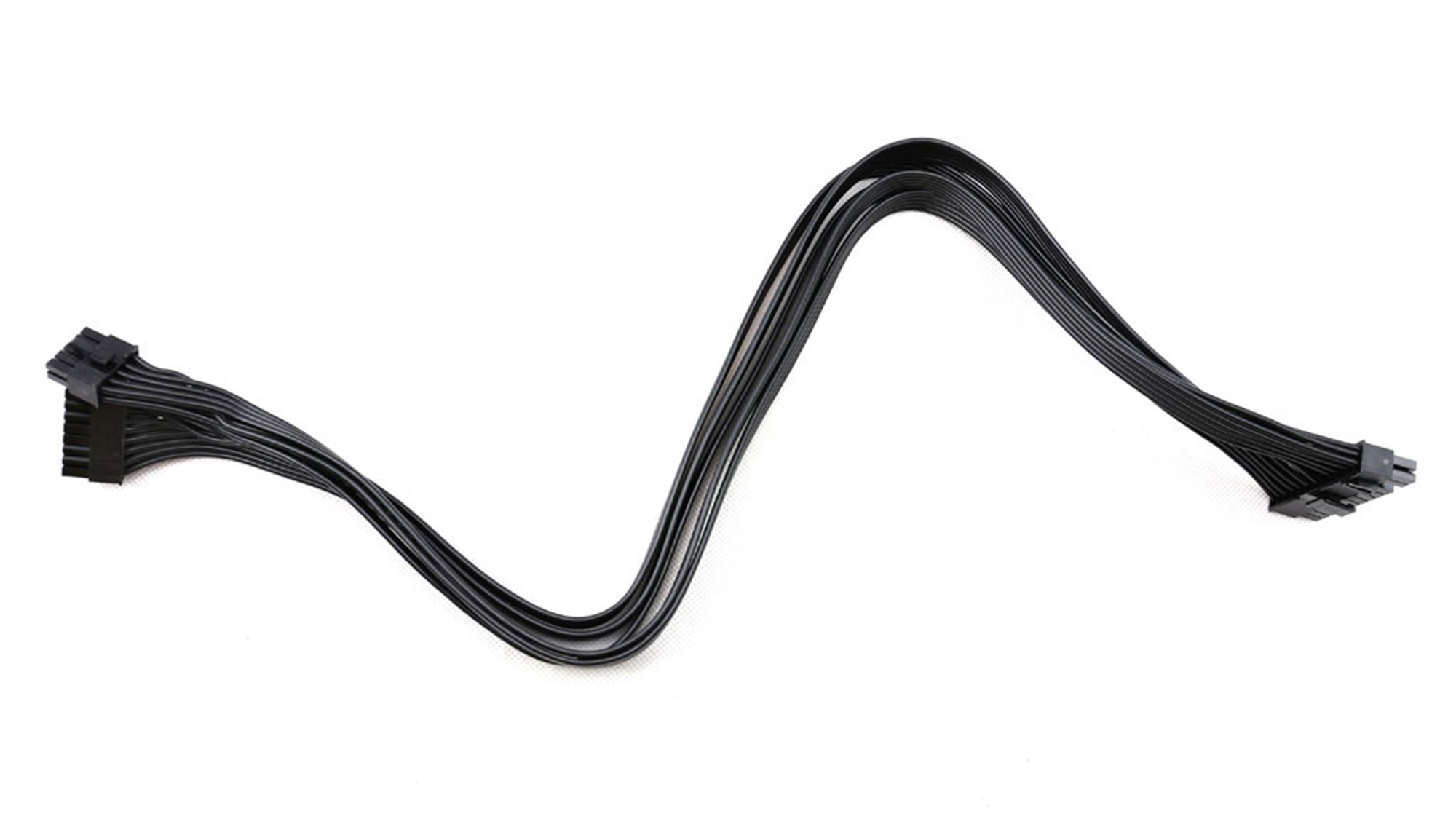
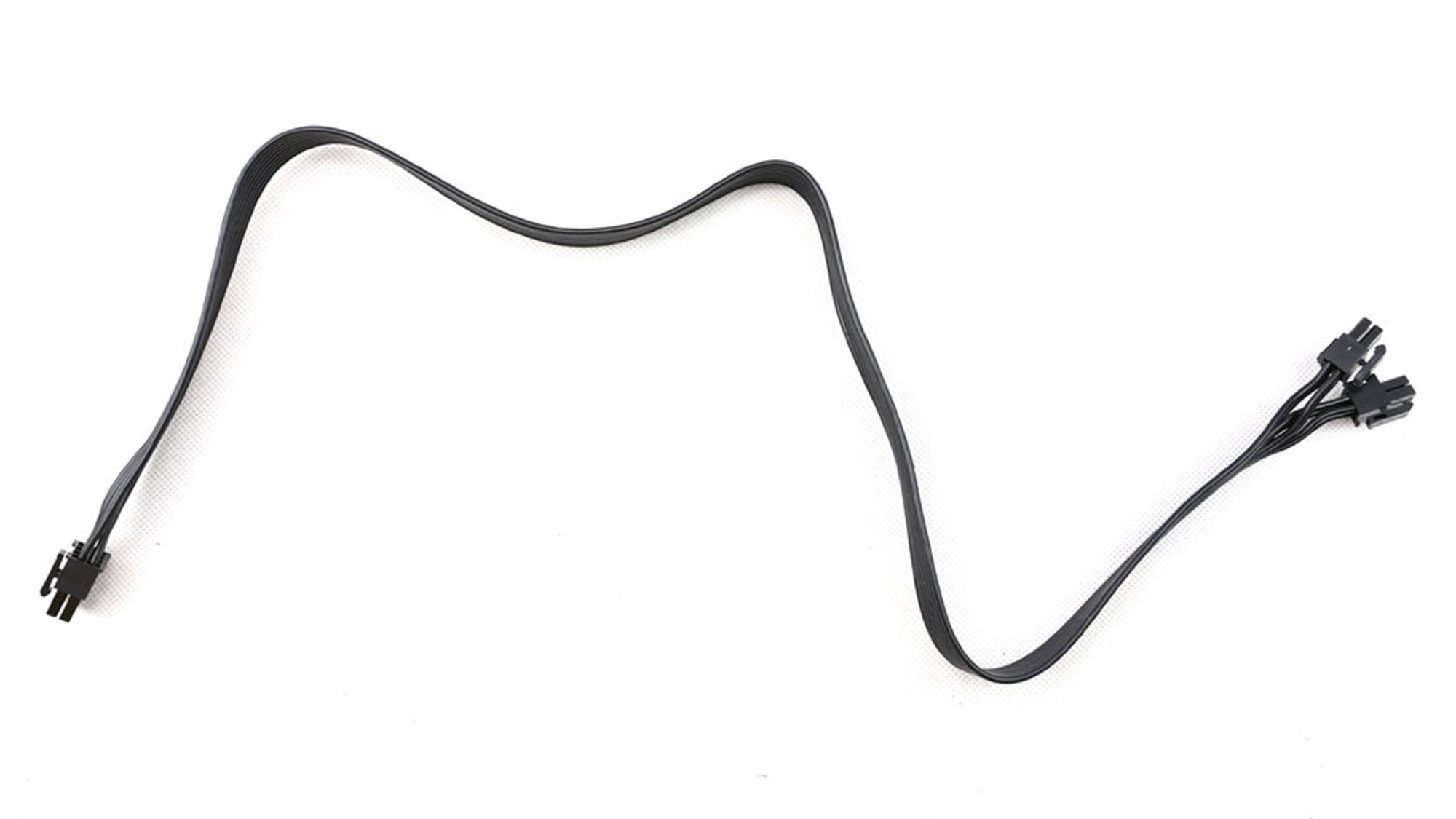
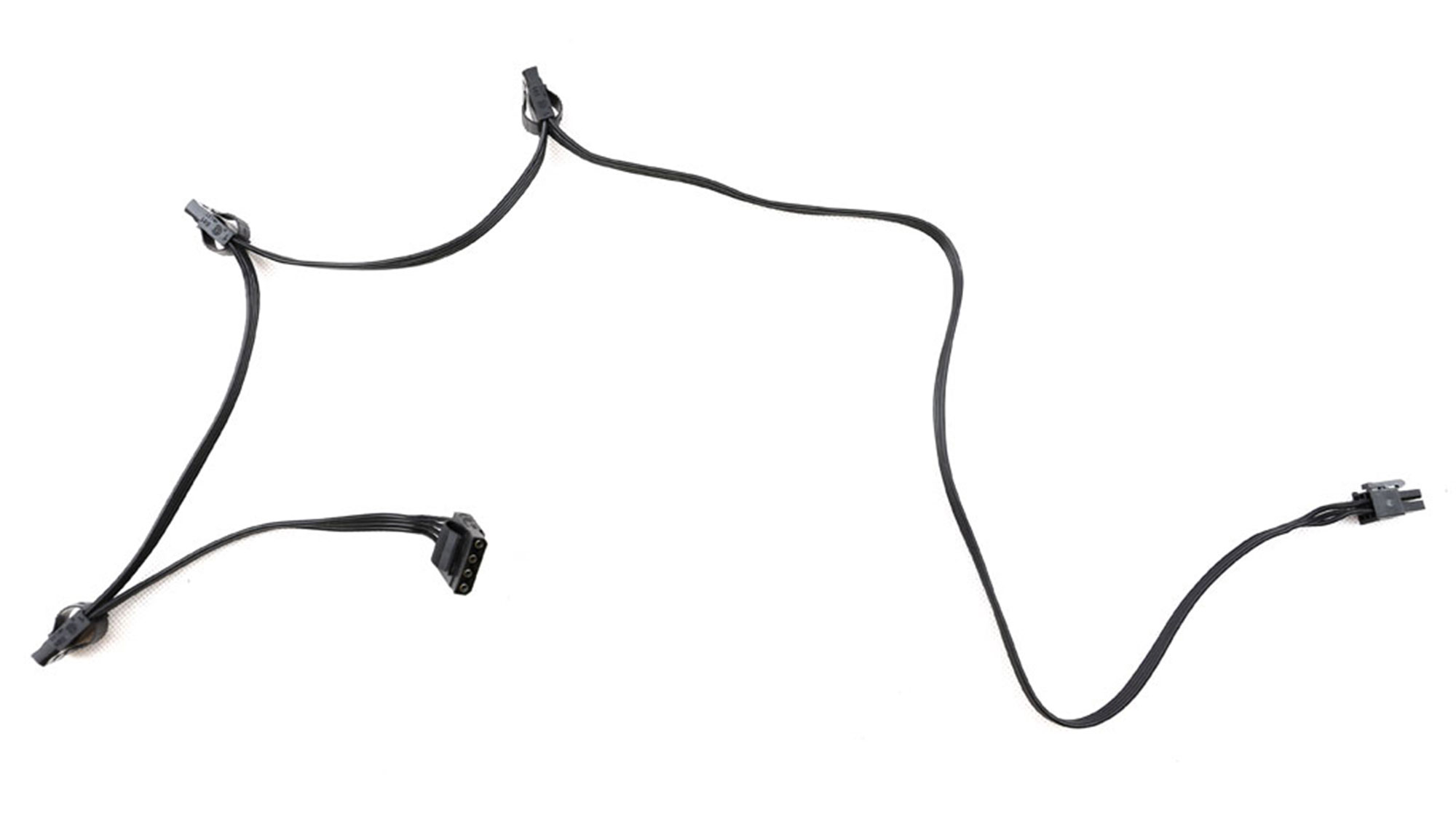
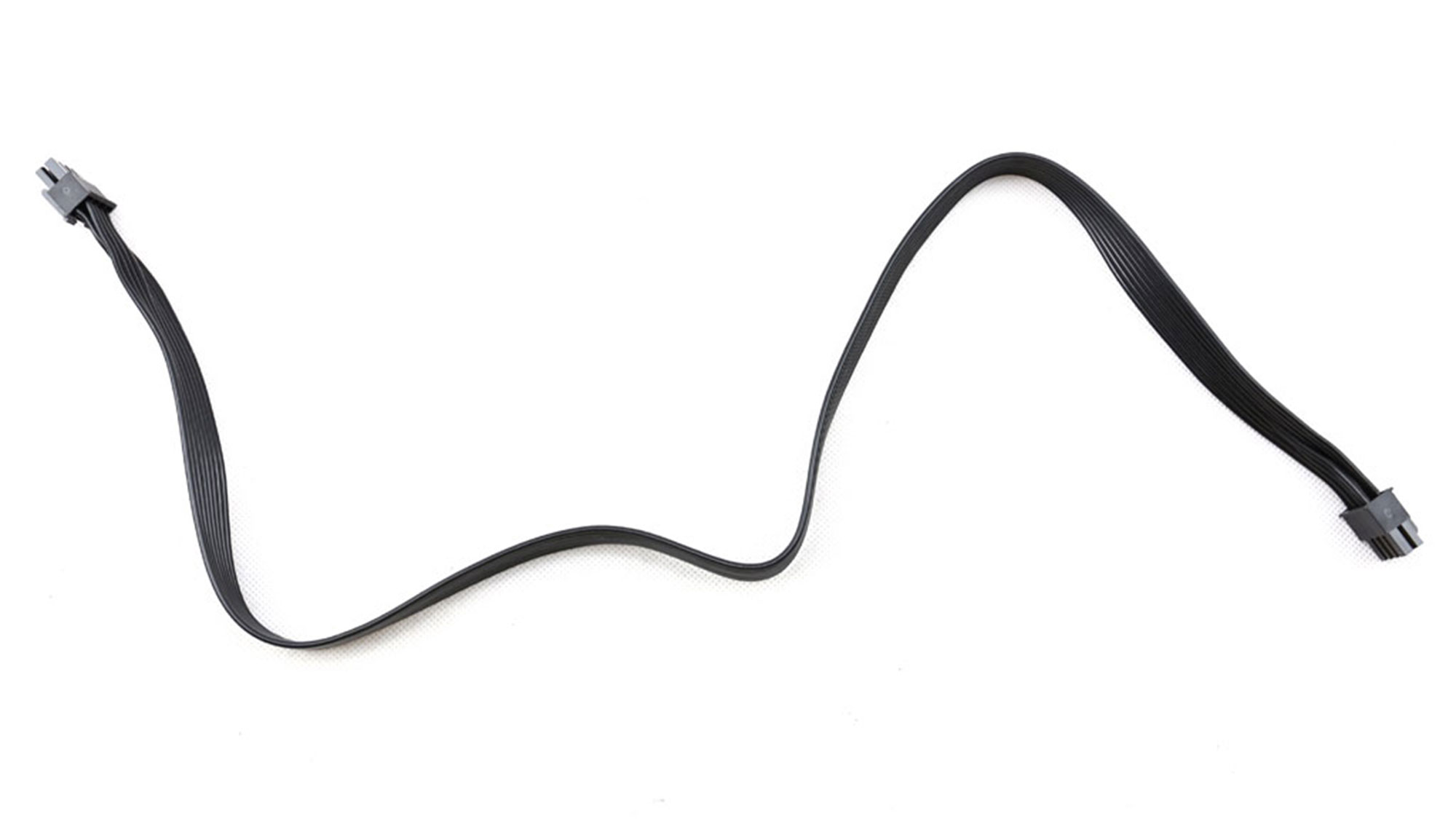
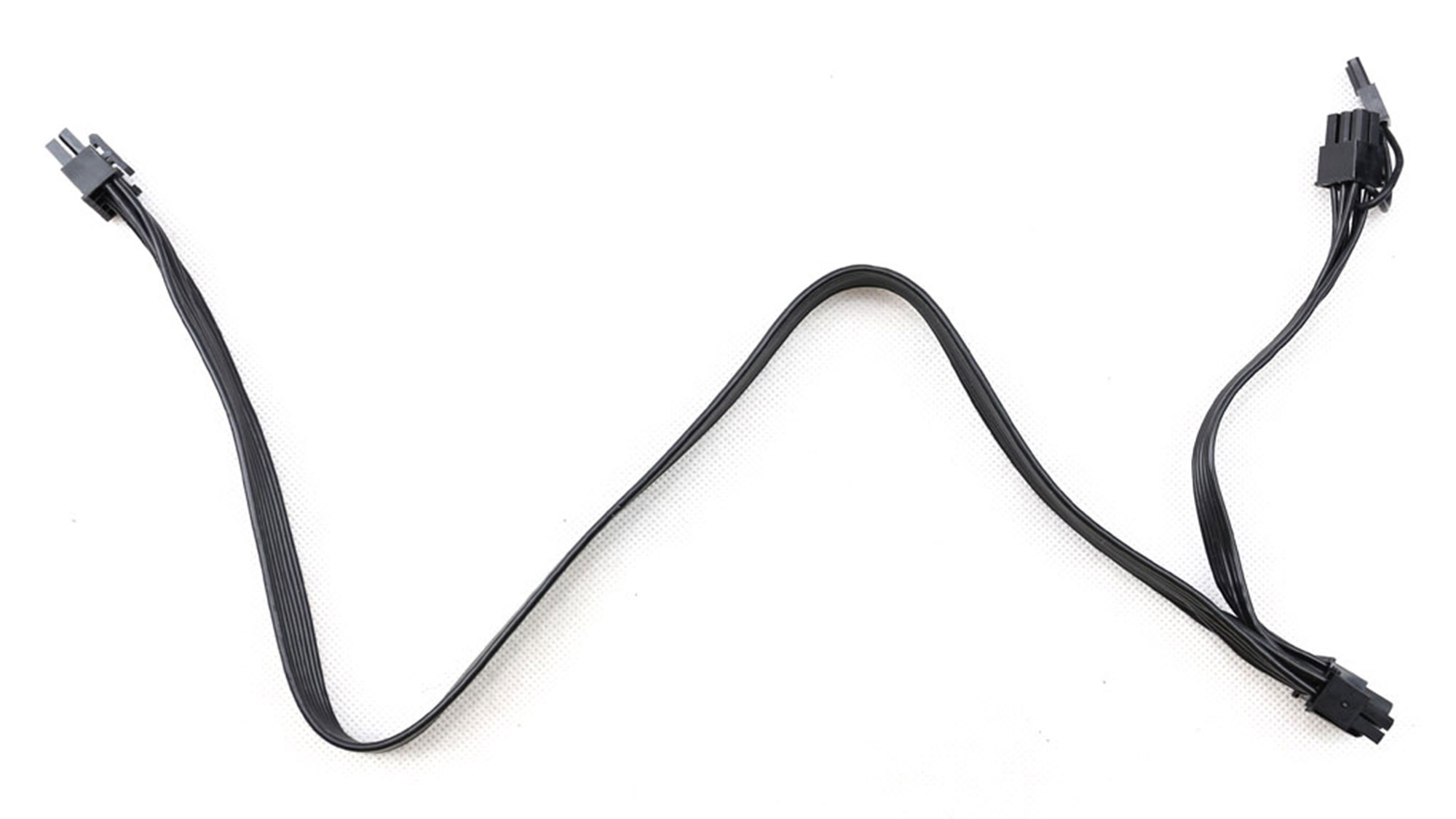

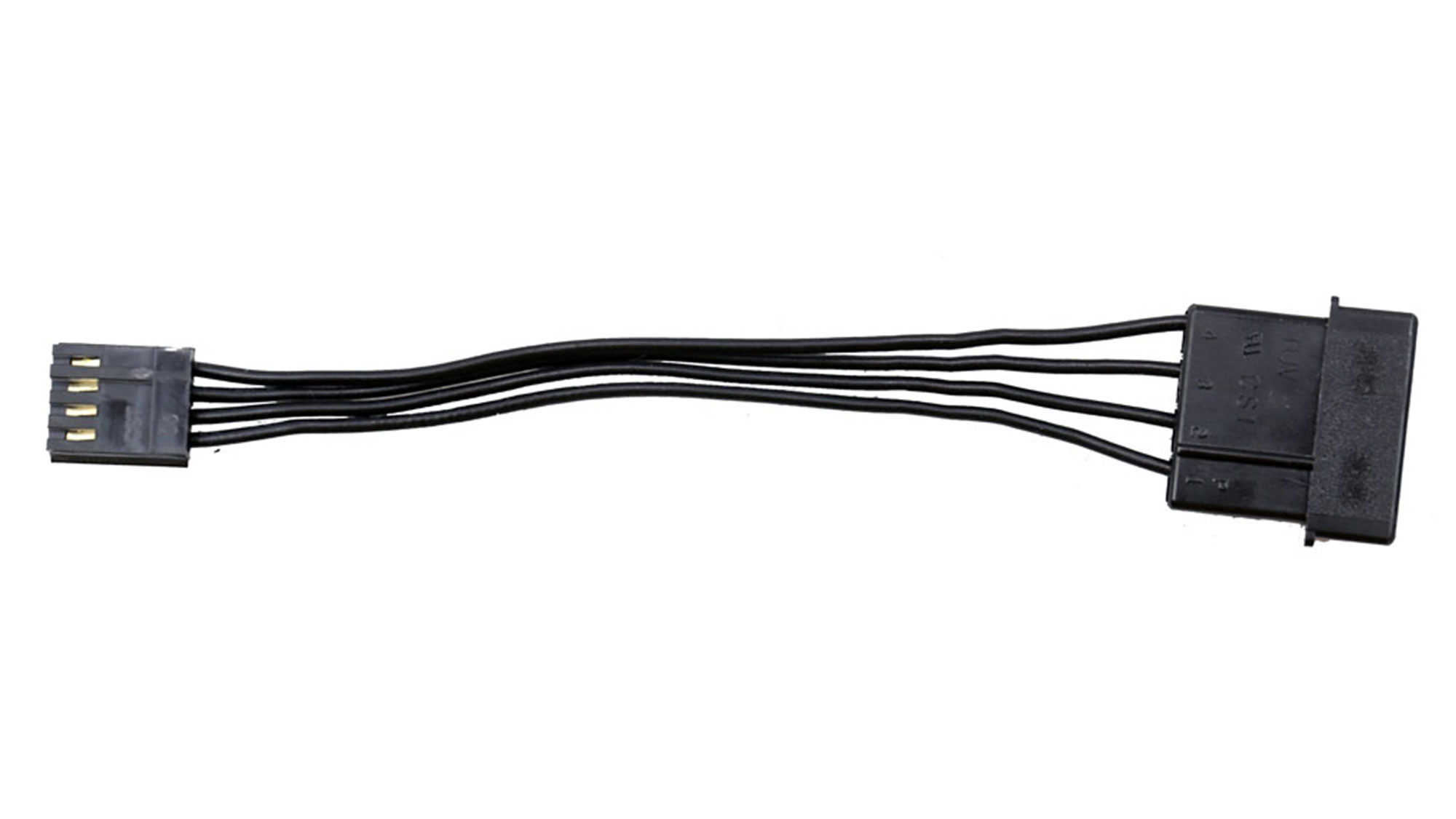
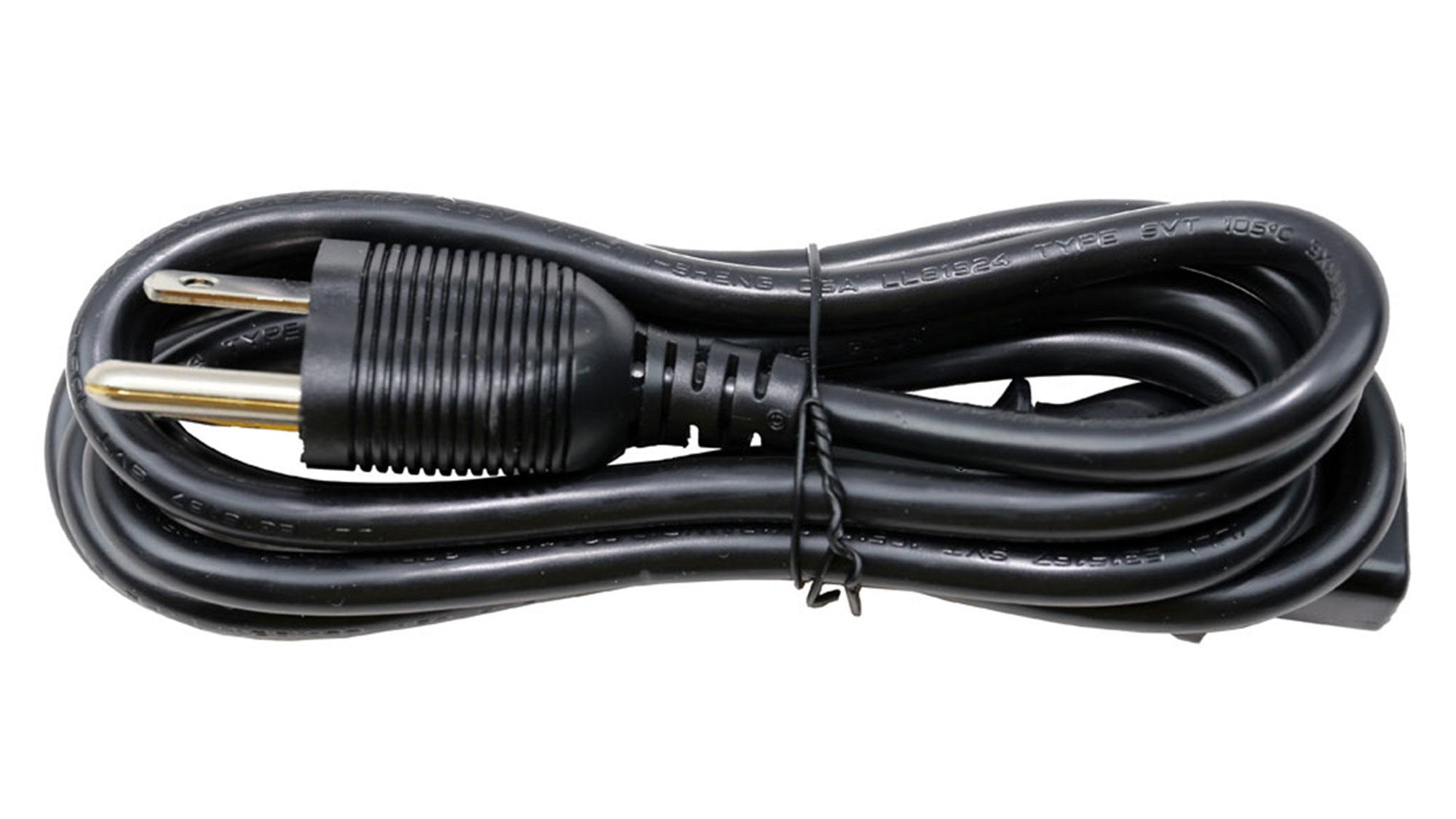
Component Analysis
We strongly encourage you to have a look at our PSUs 101 article, which provides valuable information about PSUs and their operation, allowing you to better understand the components we're about to discuss.
| General Data | - |
| Manufacturer (OEM) | CWT |
| PCB Type | Double Sided |
| Primary Side | - |
| Transient Filter | 4x Y caps, 2x X caps, 2x CM chokes, 1x MOV |
| Inrush Protection | NTC Thermistor & Relay |
| Bridge Rectifier(s) | 2x LVB2560 (600V, 25A @ 105°C) |
| APFC MOSFETS | 2x Vishay SiHF22N60E (650V, 13A @ 100°C, 0.18Ohm),1x Sync Power SPN5003 FET (for reduced no-load consumption) |
| APFC Boost Diodes | 2x StMicroelectronics STTH8S06D (600V, 8A) |
| Hold-up Cap(s) | 2x Nippon Chemi-Con (400V, 680uF each or 1,360uF combined, 2,000h @ 105°C, KMR) |
| Main Switchers | 4x Oriental Semiconductor OSG55R160FZ (550V, 14.5A @ 100°C, 0.16Ohm) |
|
IC Driver |
2x Silicon Labs Si8233BD |
| Digital Controllers | 2x Texas Instruments UCD3138A |
| Topology | Primary side: Semi-Digital, Interleaved PFC, Full-Bridge & LLC converter Secondary side: Synchronous Rectification & DC-DC converters |
| Secondary Side | - |
| +12V MOSFETS | 8x Infineon BSC016N06NS (60V, 100A @ 100°C, 1.6mOhm) |
| 5V & 3.3V | DC-DC Converters: 4x UBIQ Semiconductor QM3006D (30V, 57A @ 100°C, 5.5mOhm) |
| Filtering Capacitors | Electrolytics: 8x Nippon Chemi-Con (4-10,000h @ 105°C, KY), 1x Nippon Chemi-Con (1-5,000h @ 105°C, KZE), 4x Nichicon (2-4,000h @ 105°C, HD) Polymers: 23x Su'scon, 5x Elite, 8x NIC |
| Supervisor IC | Weltrend WT7502 ( OVP, UVP, SCP, PG) |
| Fan Model | Thermaltake TT-1425 (Hong Sheng OEM, A1425L12S, 140mm, 12V, 0.30A, Hydrodynamic Bearing, RGB LED Lighting Fan) |
| 5VSB Circuit | - |
| Rectifier | IPS ISD04N65A & PS1045L SBR (45V, 10A) |
| Standby PWM Controller | On-Bright OB5282 |

Overall Photos
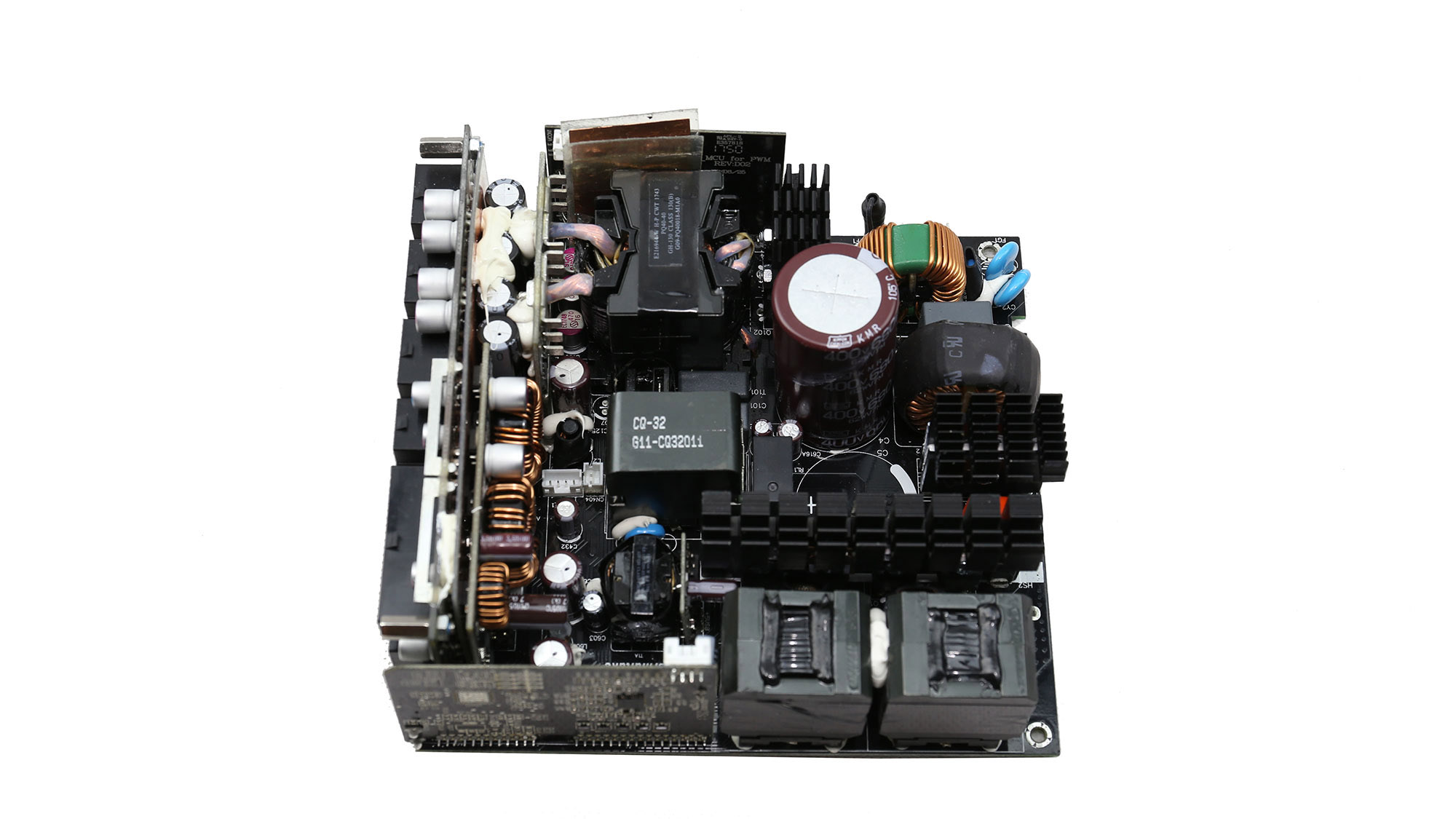


The platform is the same used in the stronger members of the line, with different parts, though, since the max power of the PSU is lower. On the primary side, we find an interleaved APFC stage with a pair of APFC converters operating in parallel, with a phase difference among them. After the bulk caps of the APFC converters are four primary switching FETs, arranged in a full-bridge topology. An LLC resonant converter is used to boost efficiency.
On the secondary side, a synchronous rectification scheme is used, and a pair of VRMs regulate the minor rails. The design is semi-digital since the entire primary side, along with a part of the secondary, is controlled by MCUs. Only the VRMs and the 5VSB circuit are analog controlled.
Get Tom's Hardware's best news and in-depth reviews, straight to your inbox.
The heatsinks are small, especially on the secondary side, where the +12V FETs are cooled down by small heat sinks, which are installed on the vertical board that hosts the FETs mentioned above. The build quality is good, and most of the Japanese electrolytic caps used on the secondary side belong to mid and high-level lines and not mainstream ones.
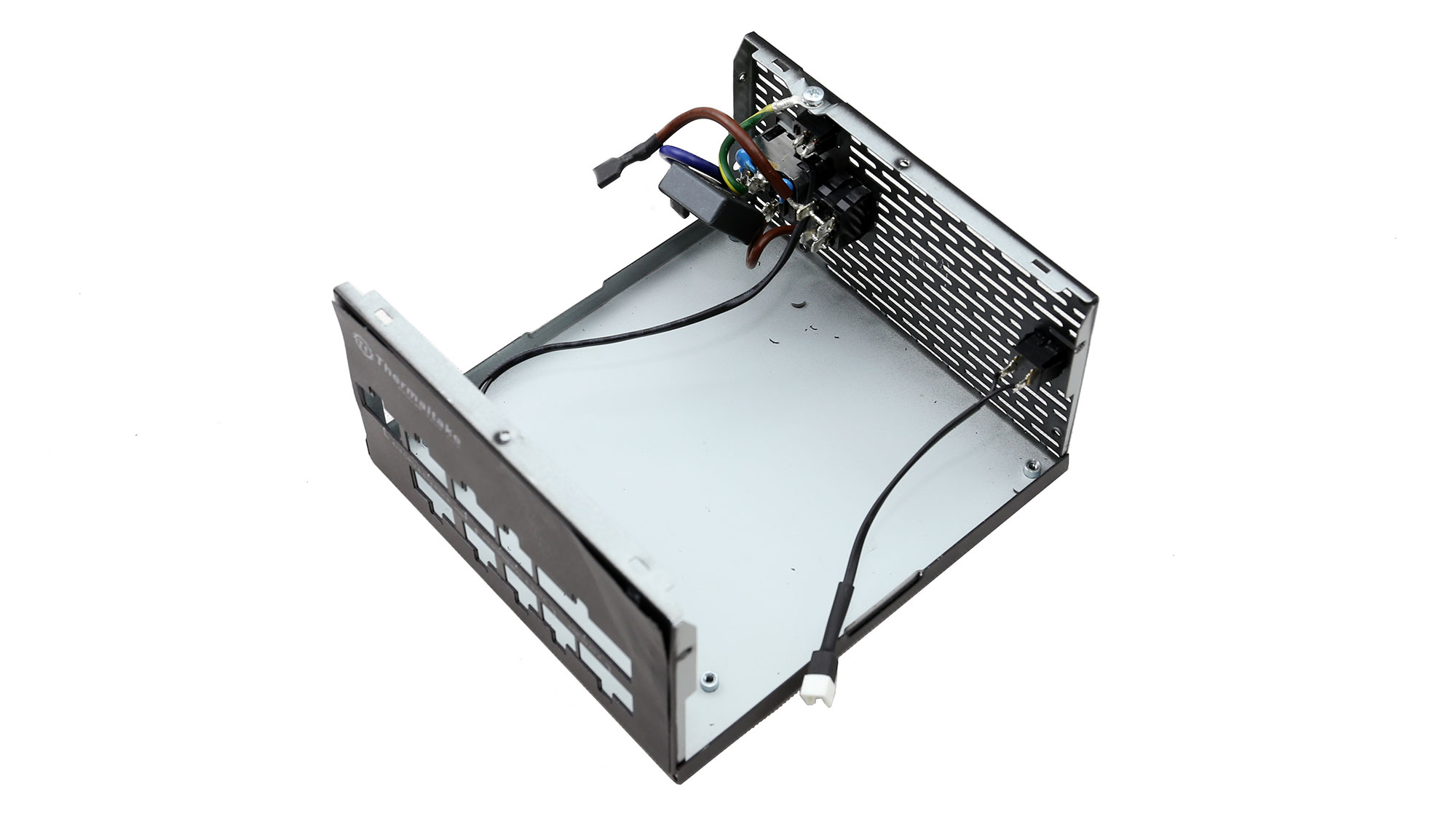
Transient filter and bridge rectifiers

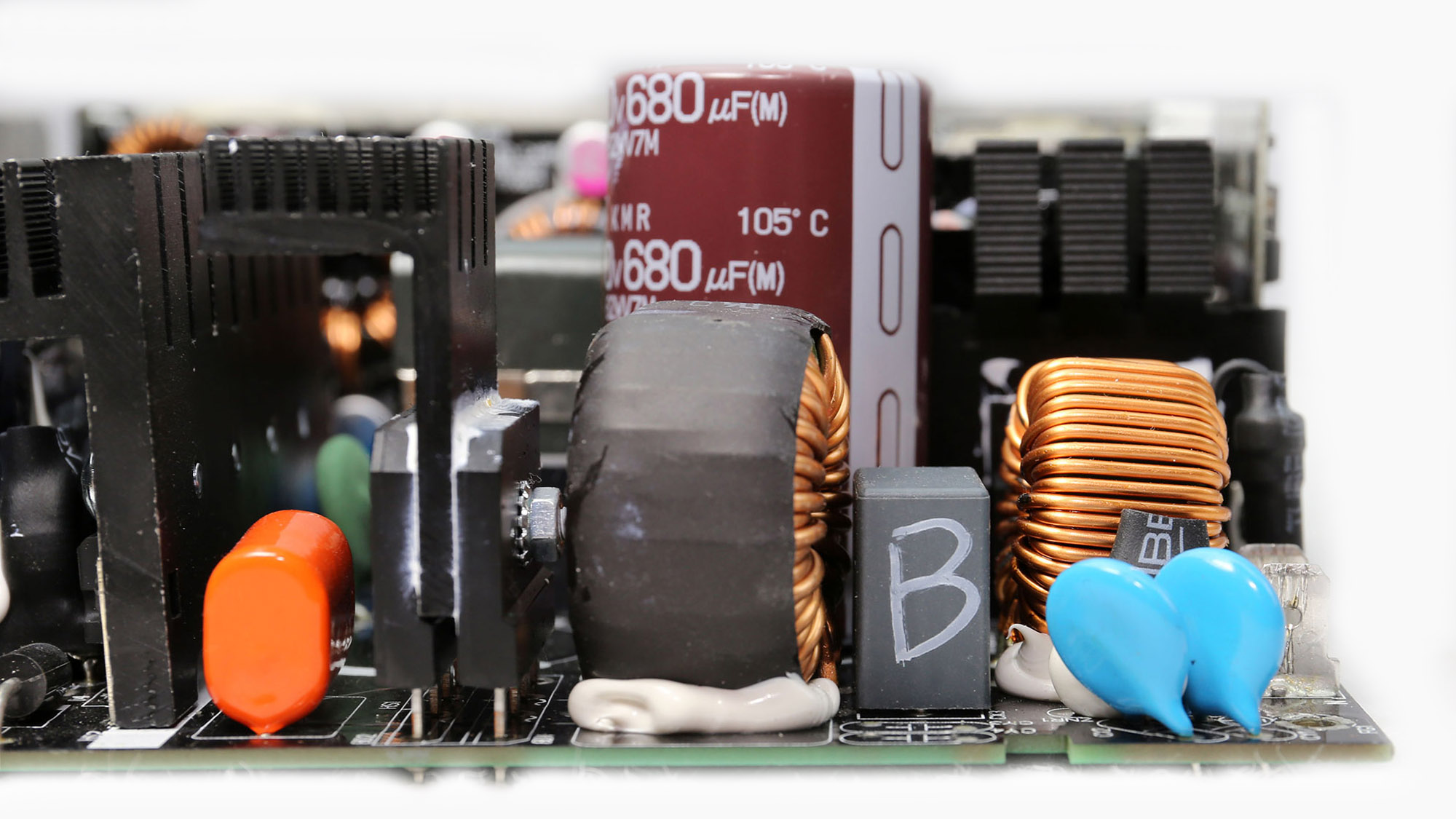
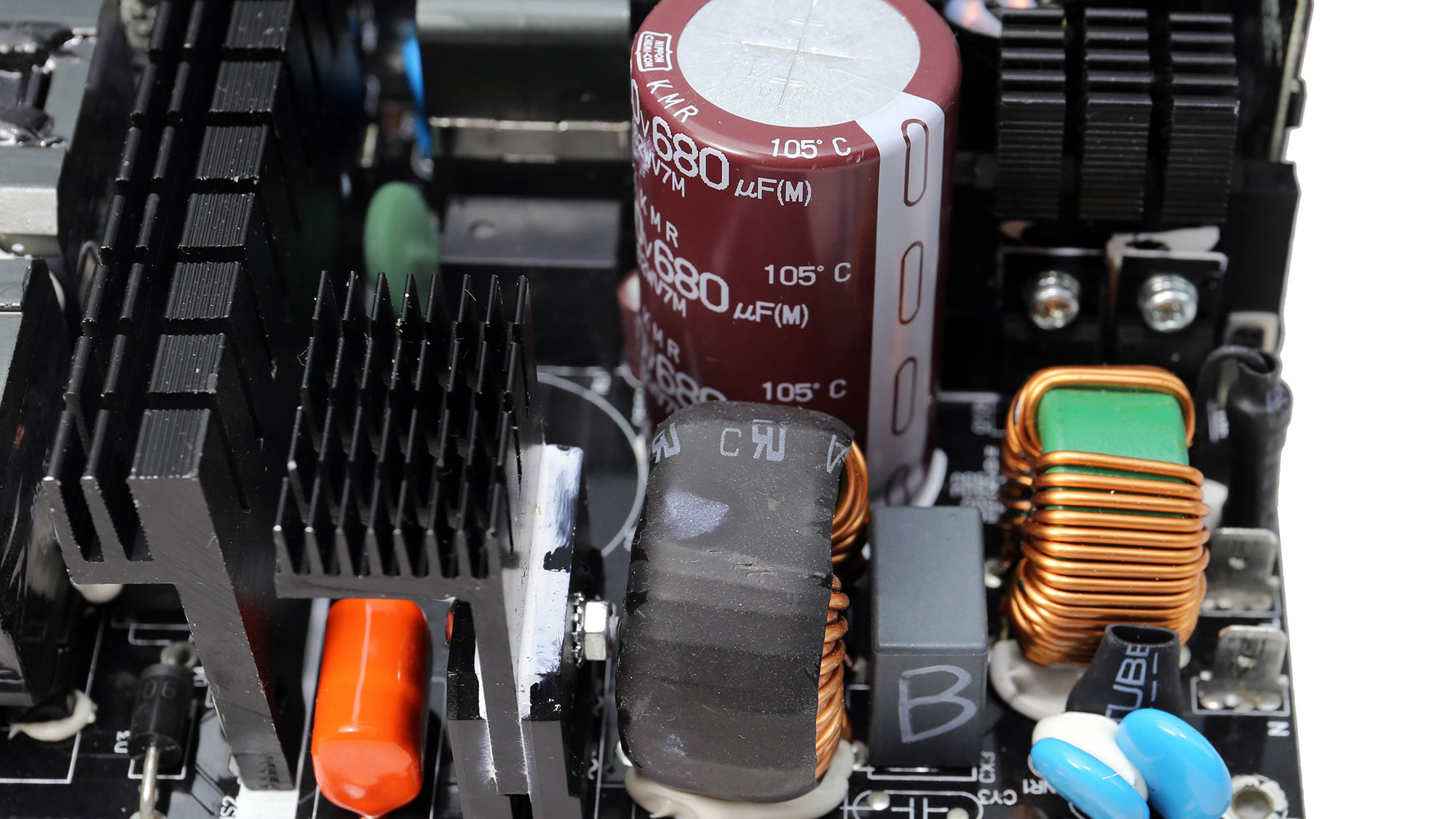
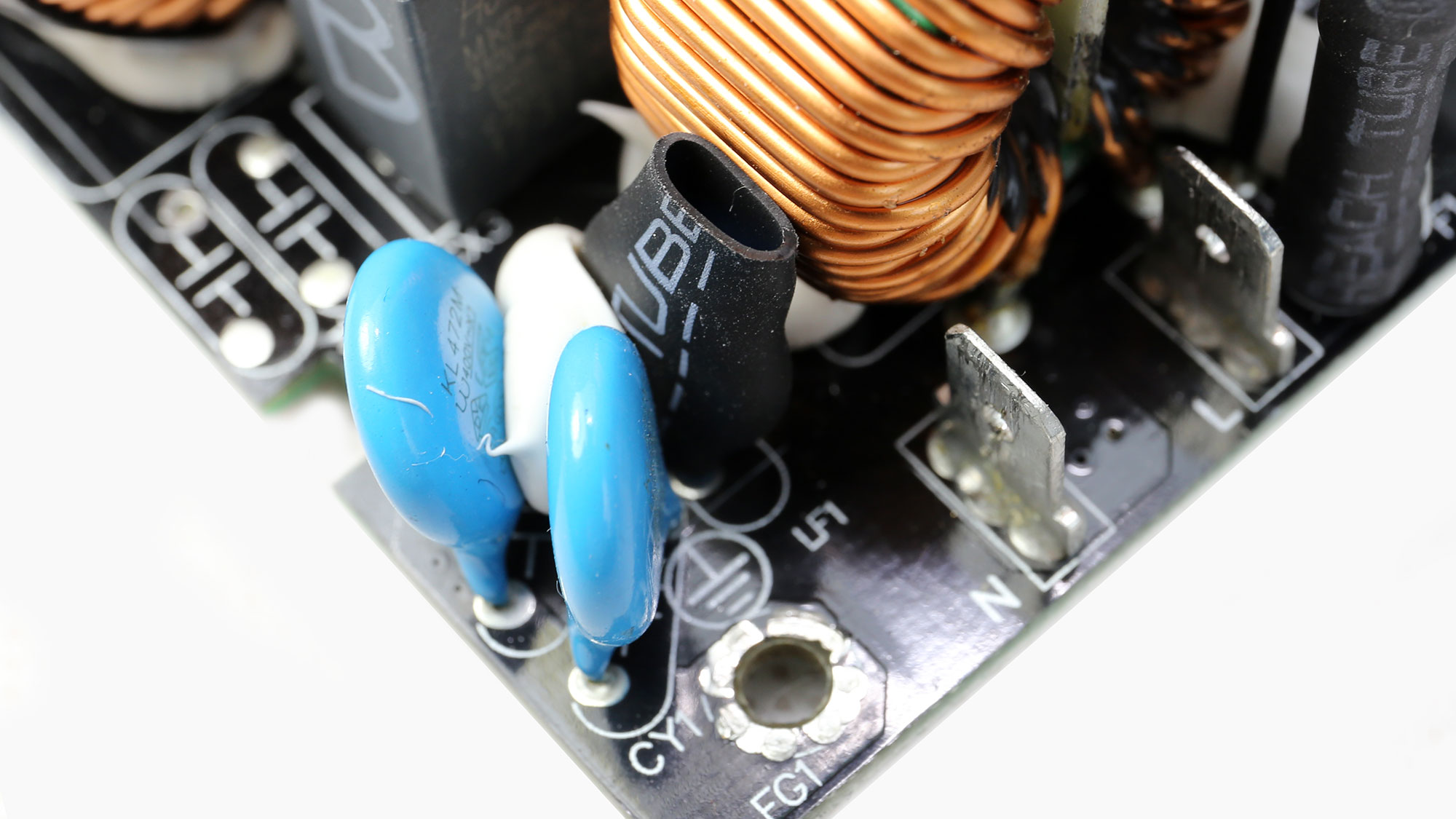
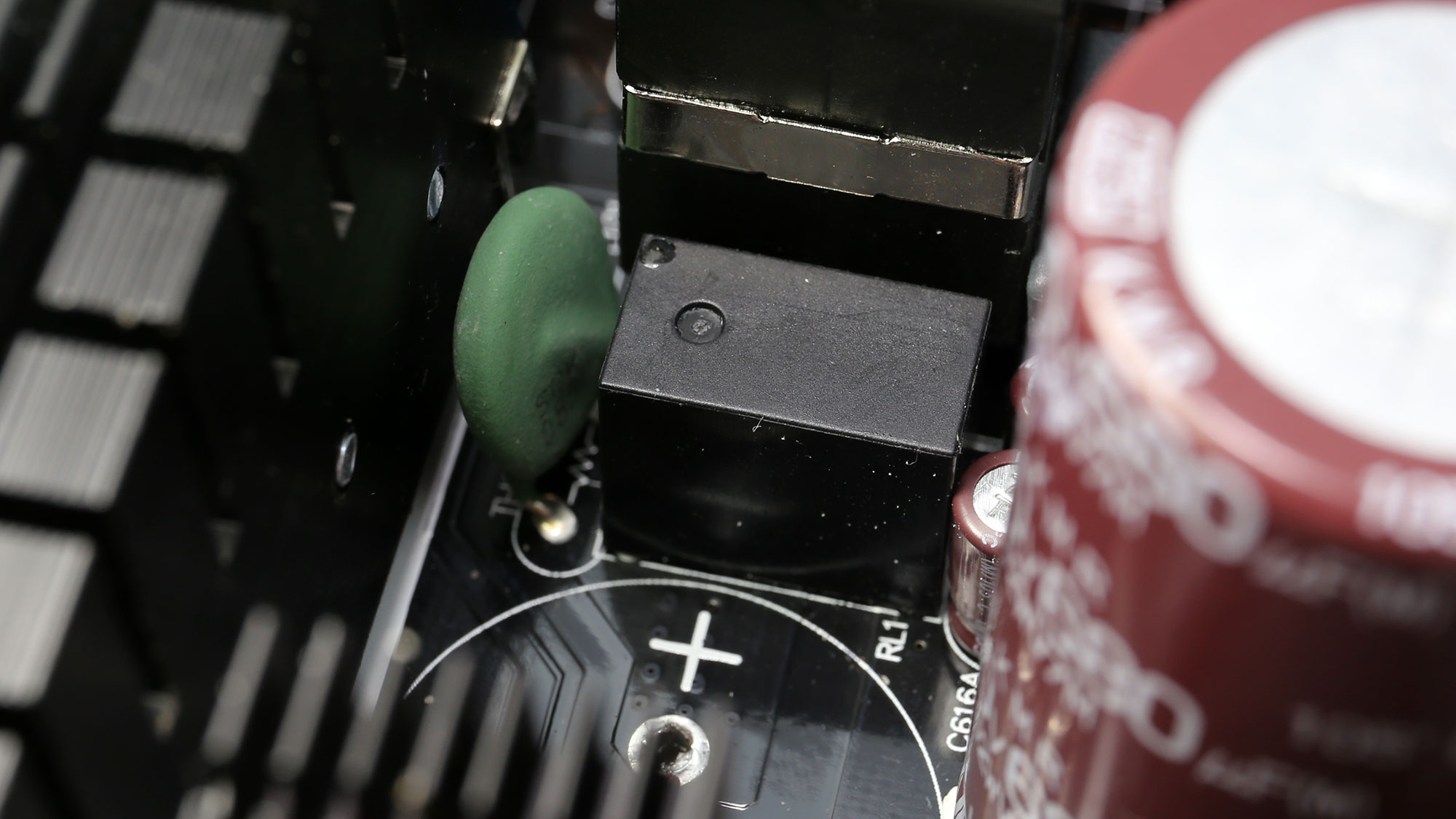
The EMI filter has all the necessary components to keep the conducted EMI emissions (from both directions) low. There is also a MOV to protect from voltage surges, while an NTC thermistor, along with a bypass relay lower the inrush currents.
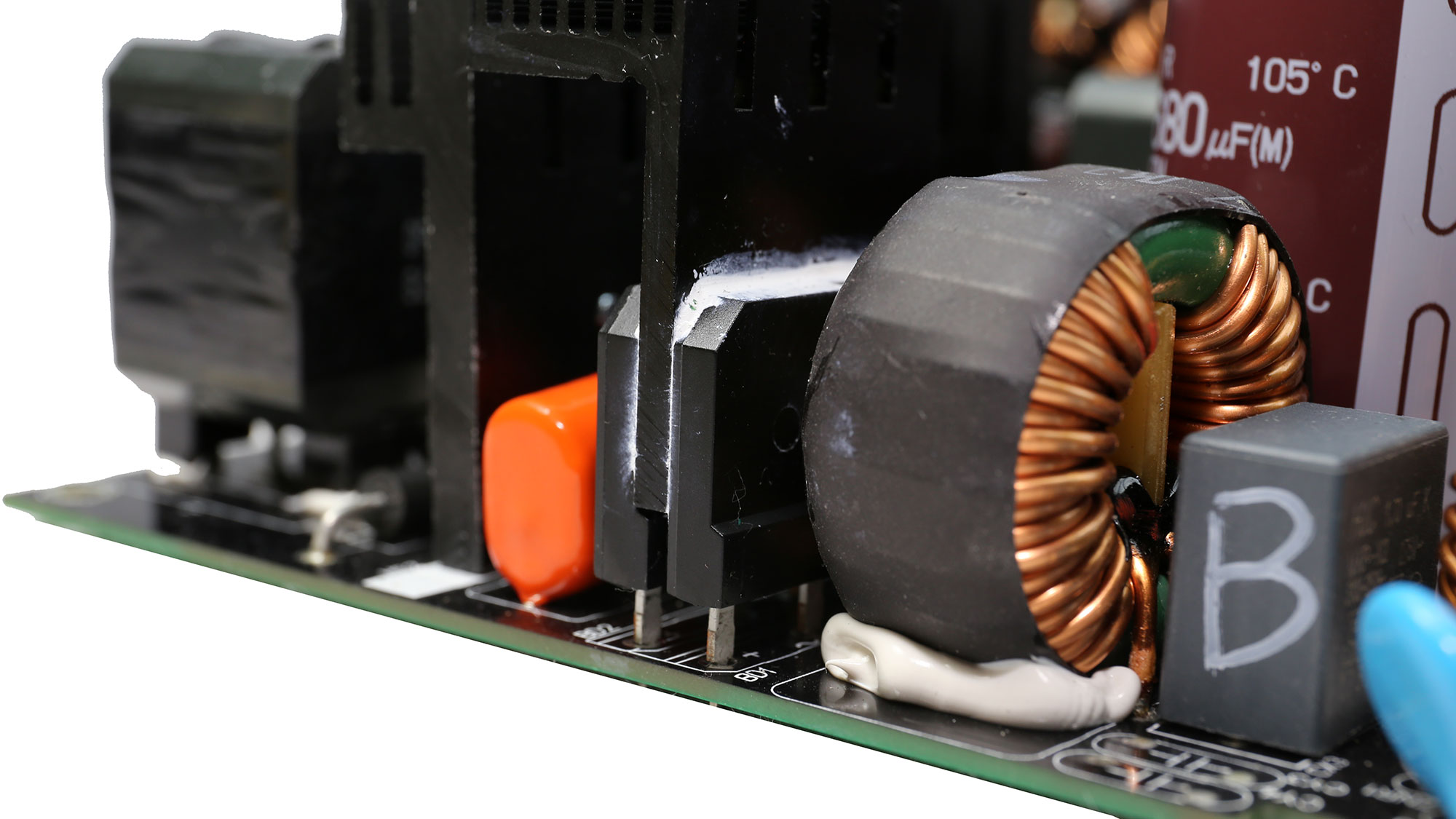
Bridge rectifiers
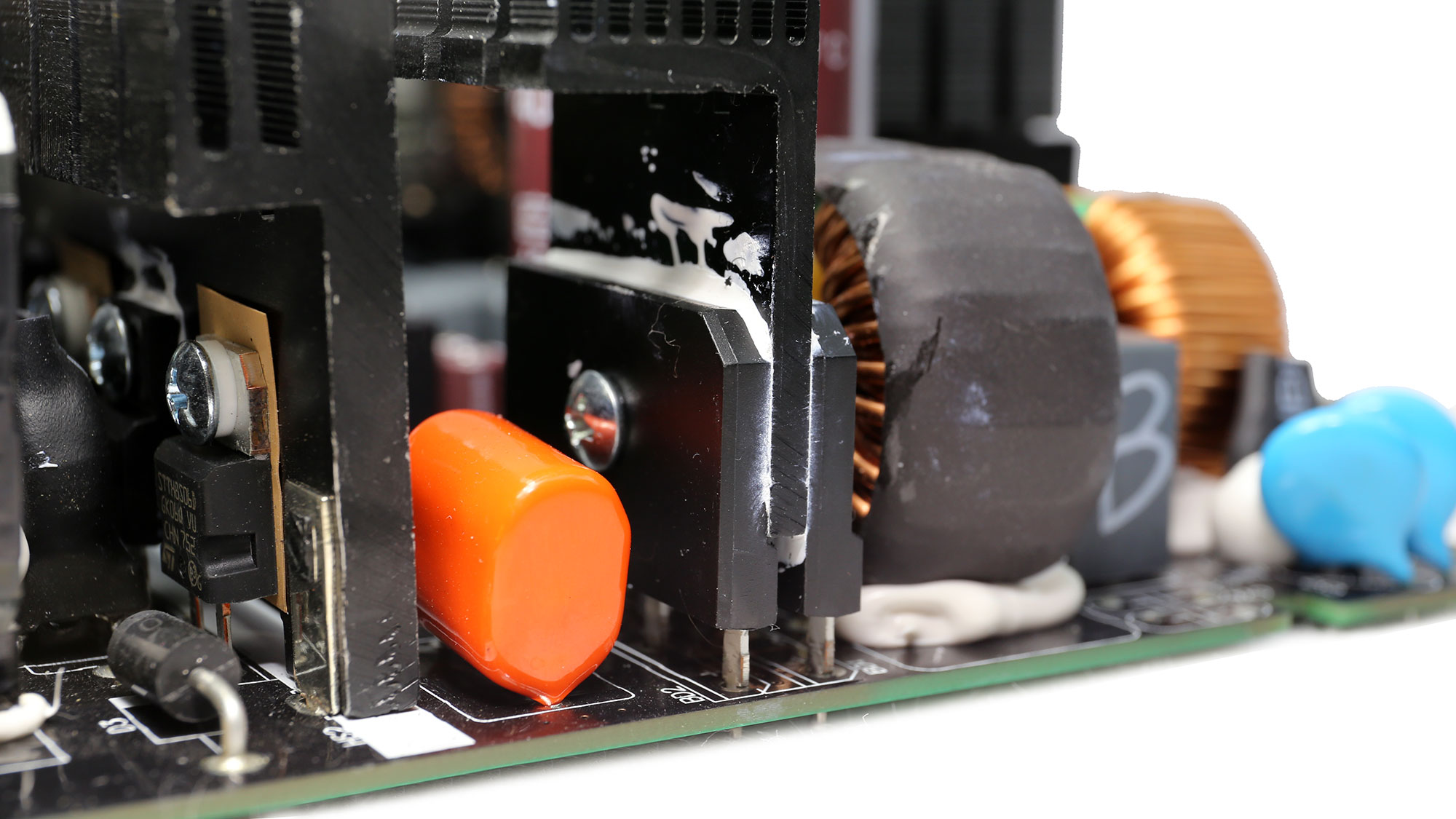
There are two bridge rectifiers, installed in parallel to lower energy losses.

APFC Converter
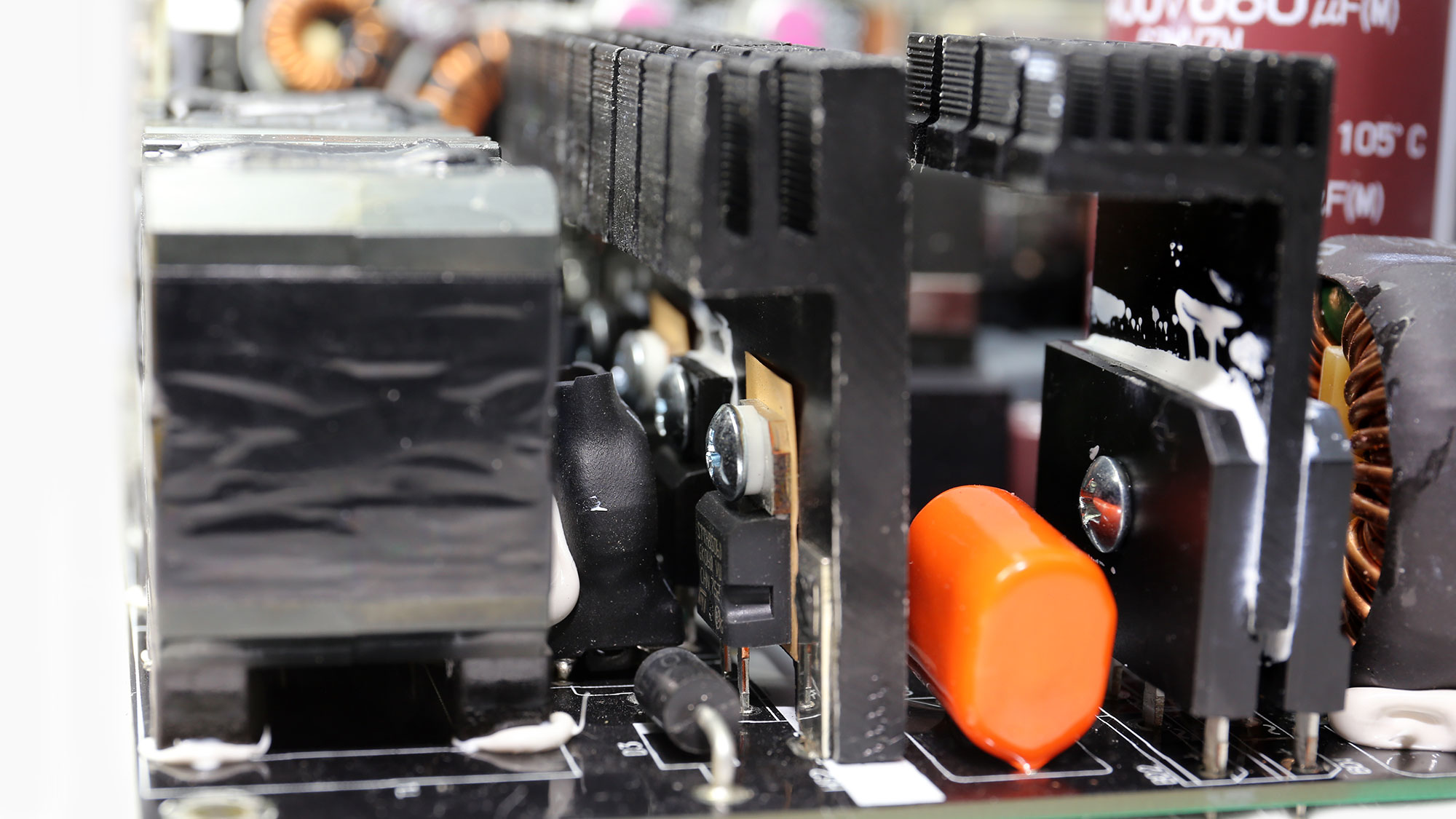
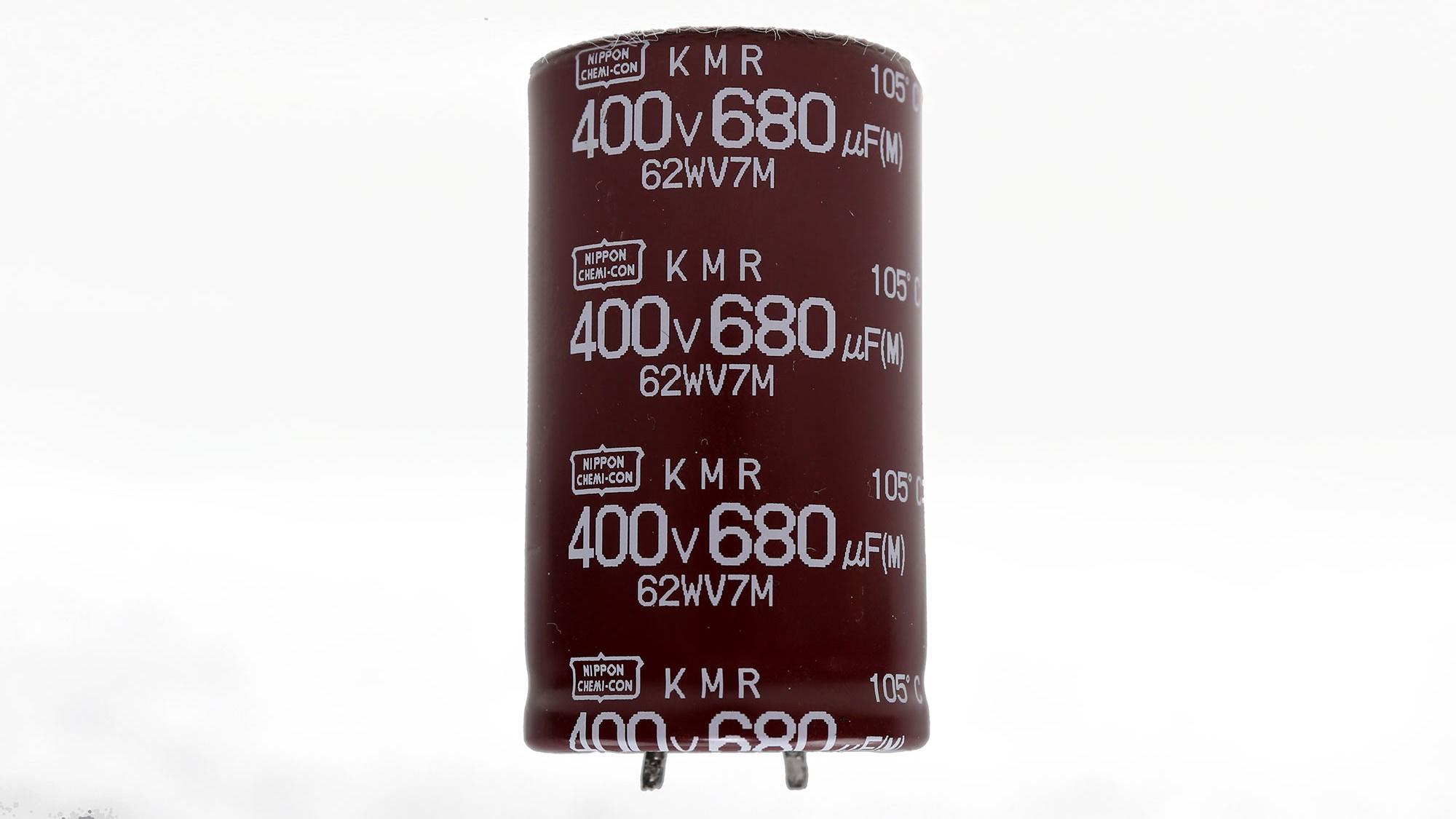
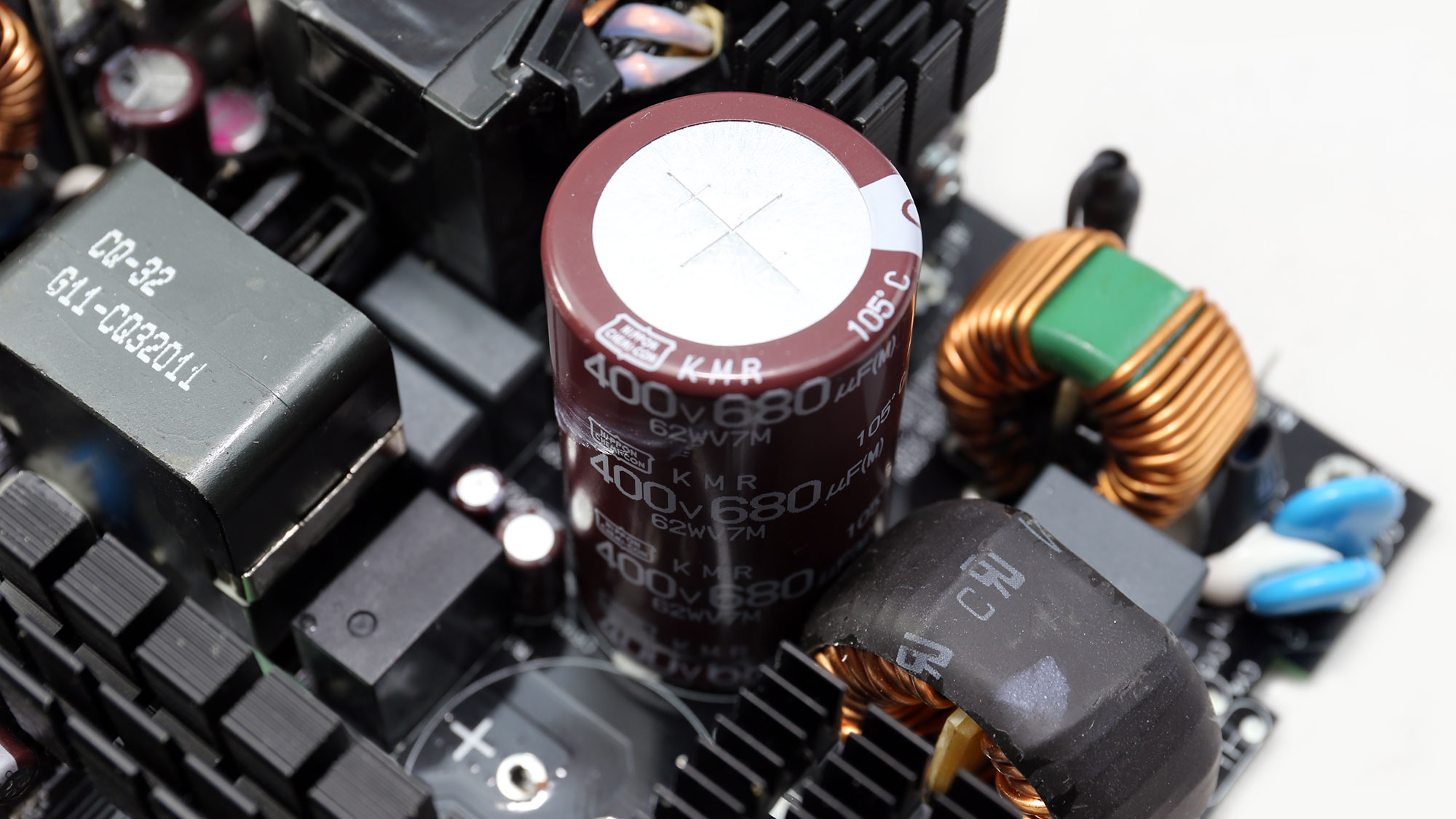
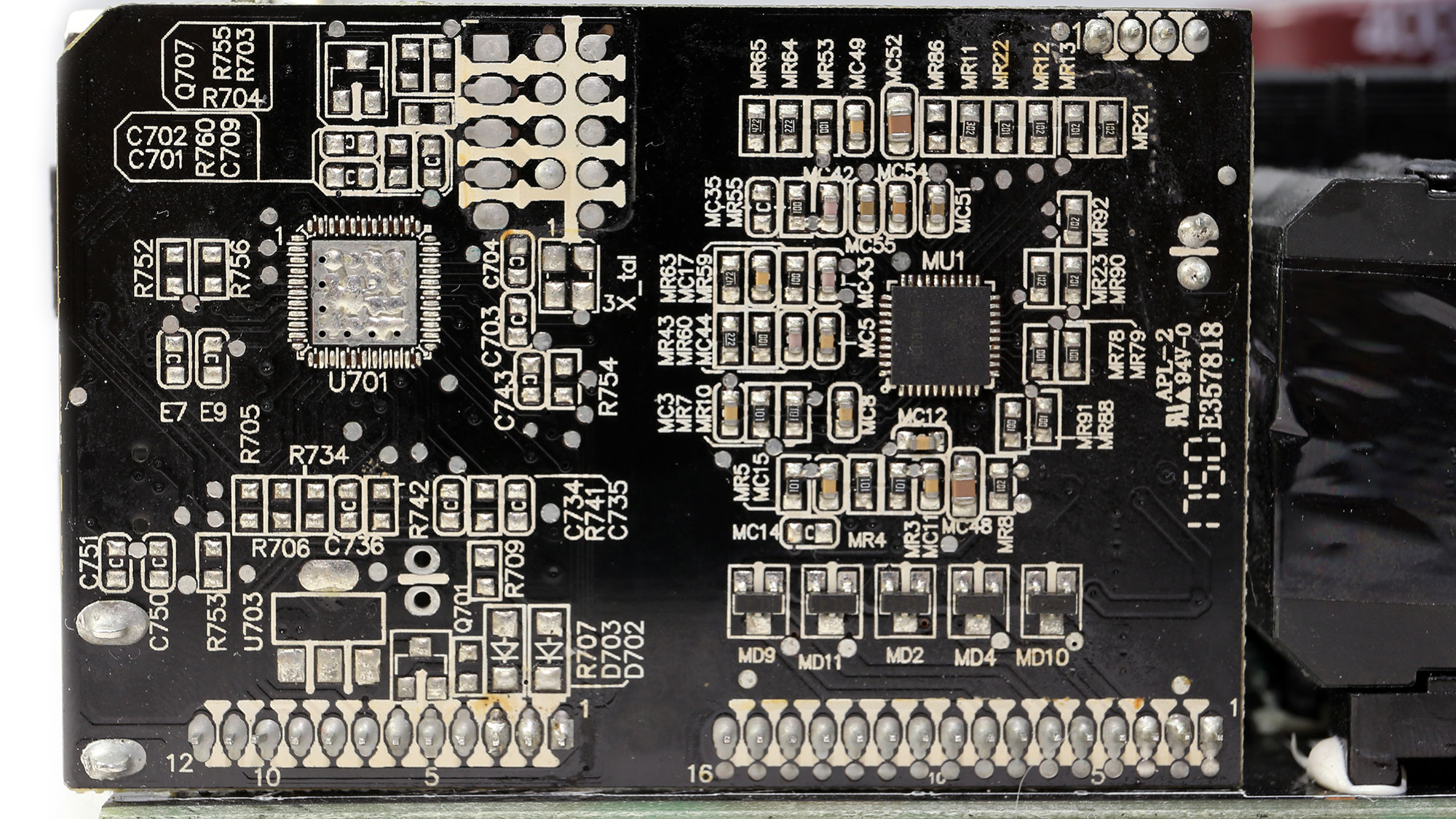

The interleaved APFC uses an increased number of parts, including two chokes. The bulk caps are of high quality and have enough capacity to provide a longer than 17ms hold-up time.
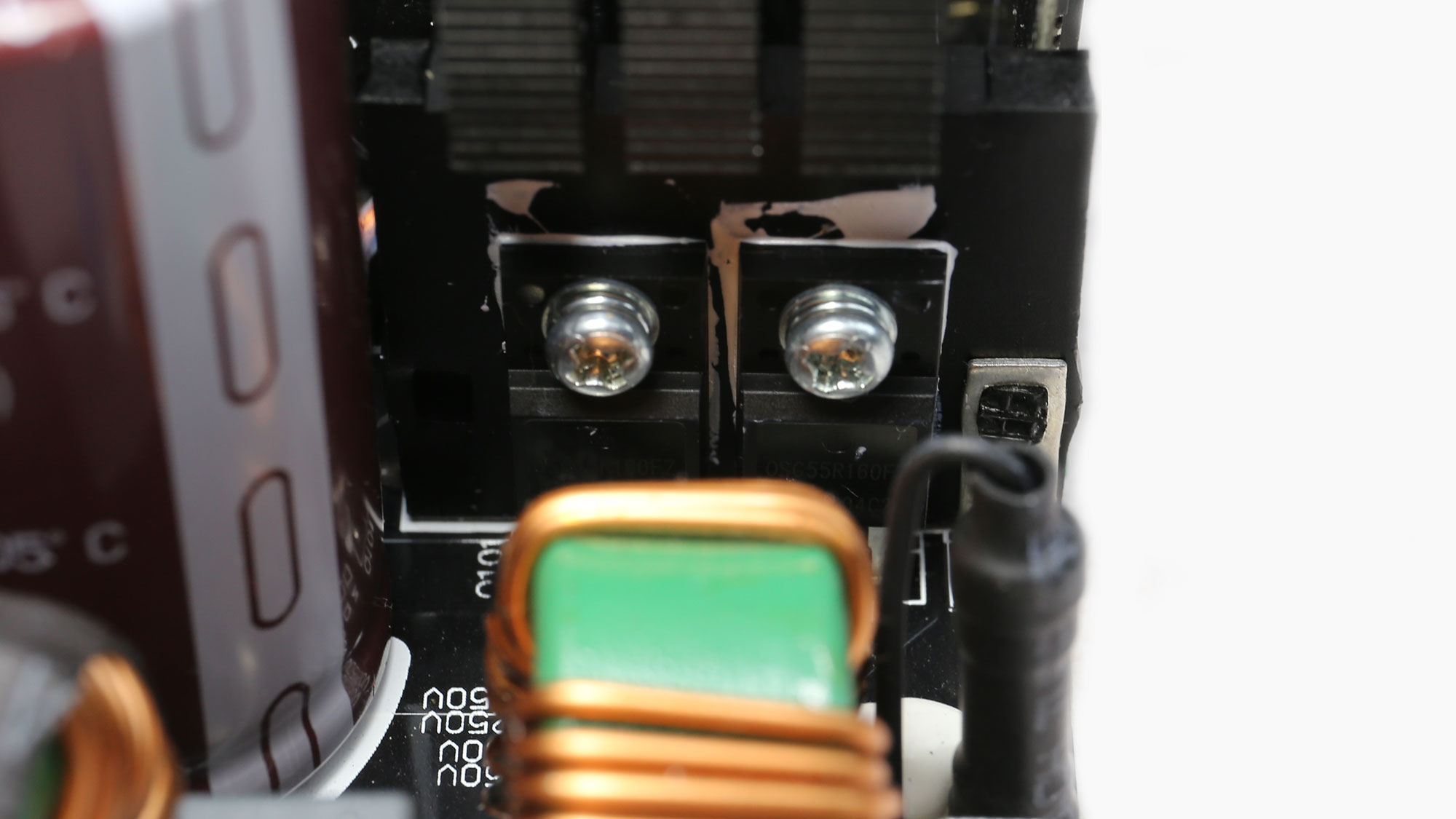
Main FETs and primary transformer
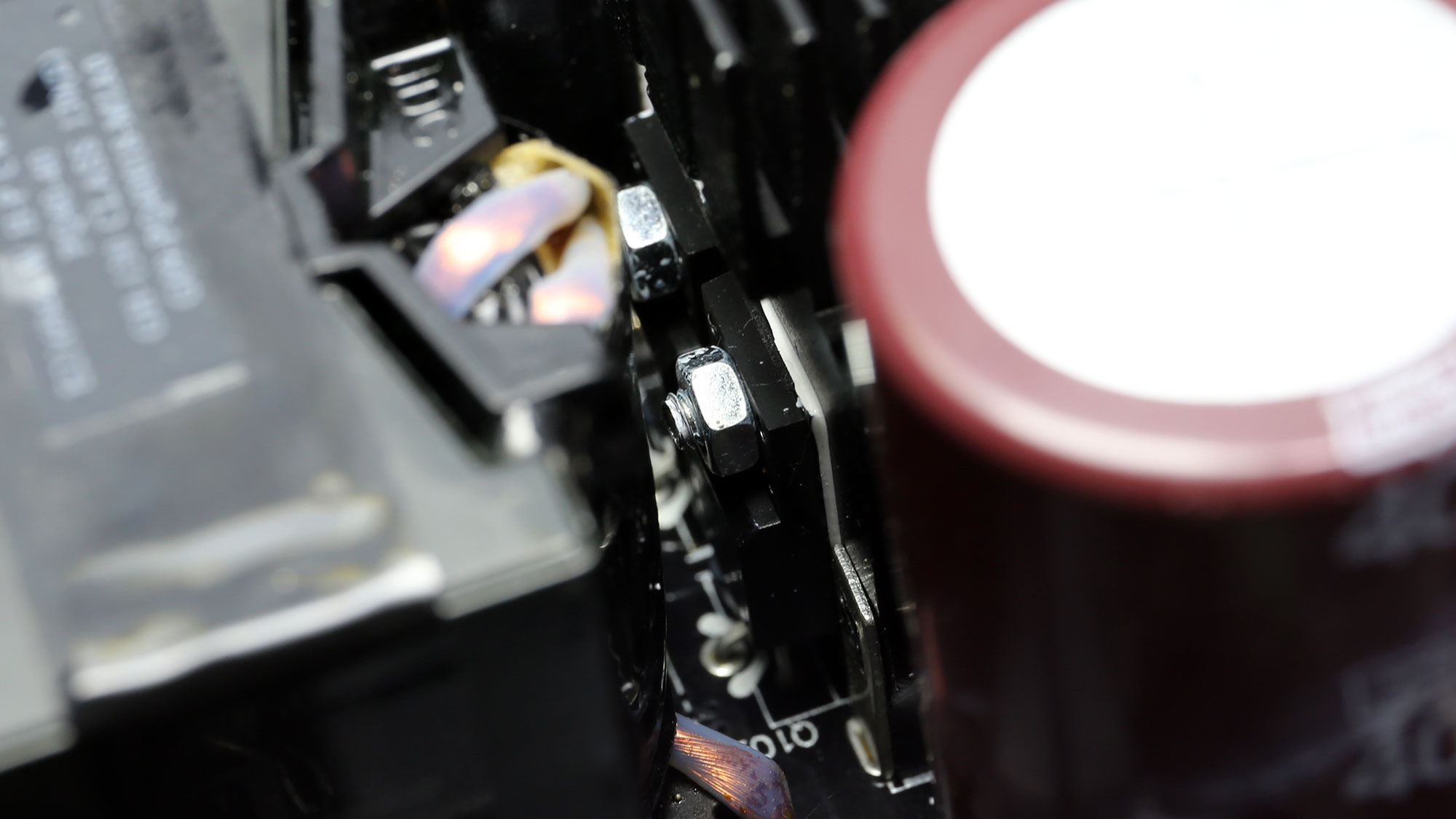
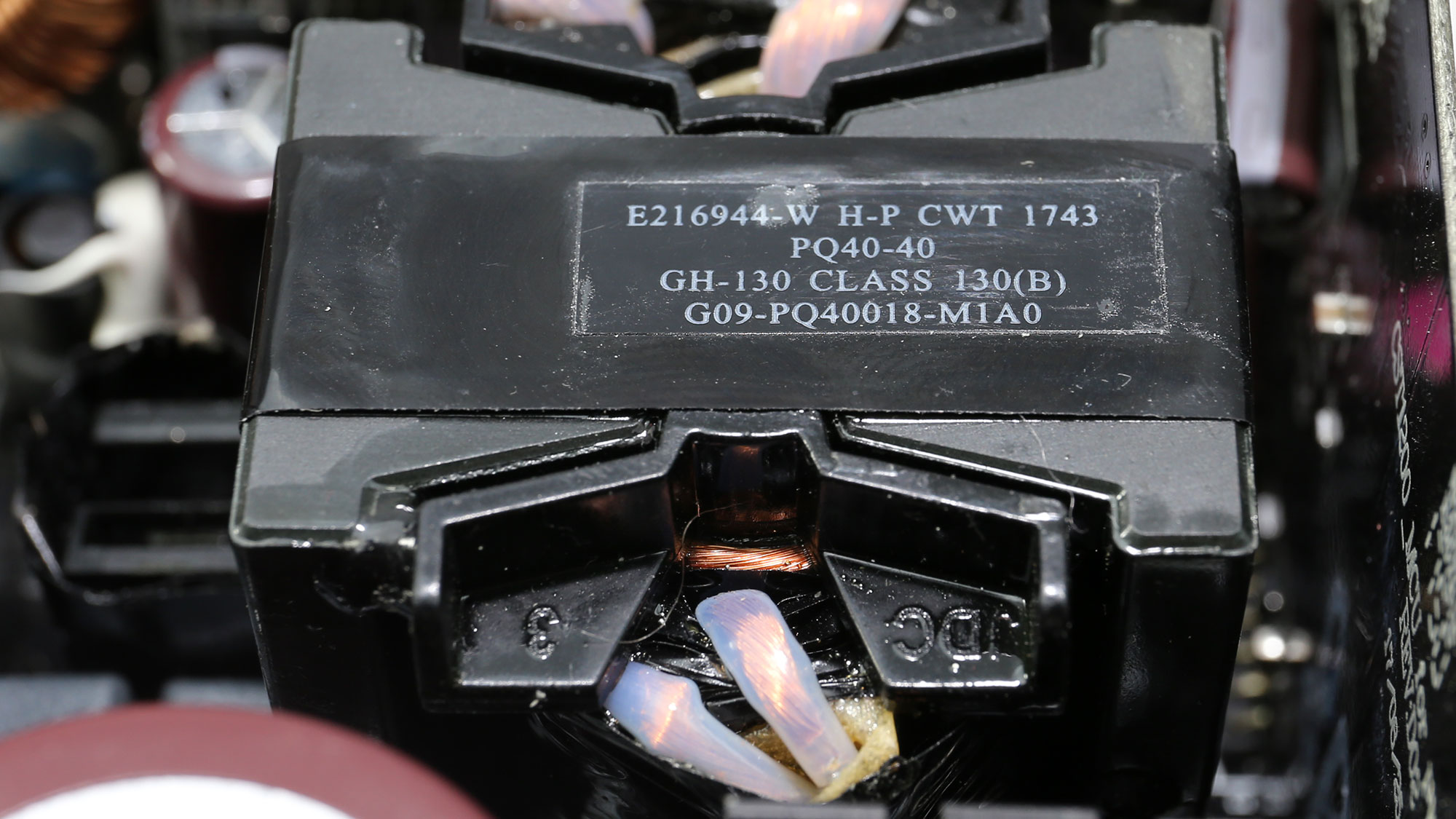
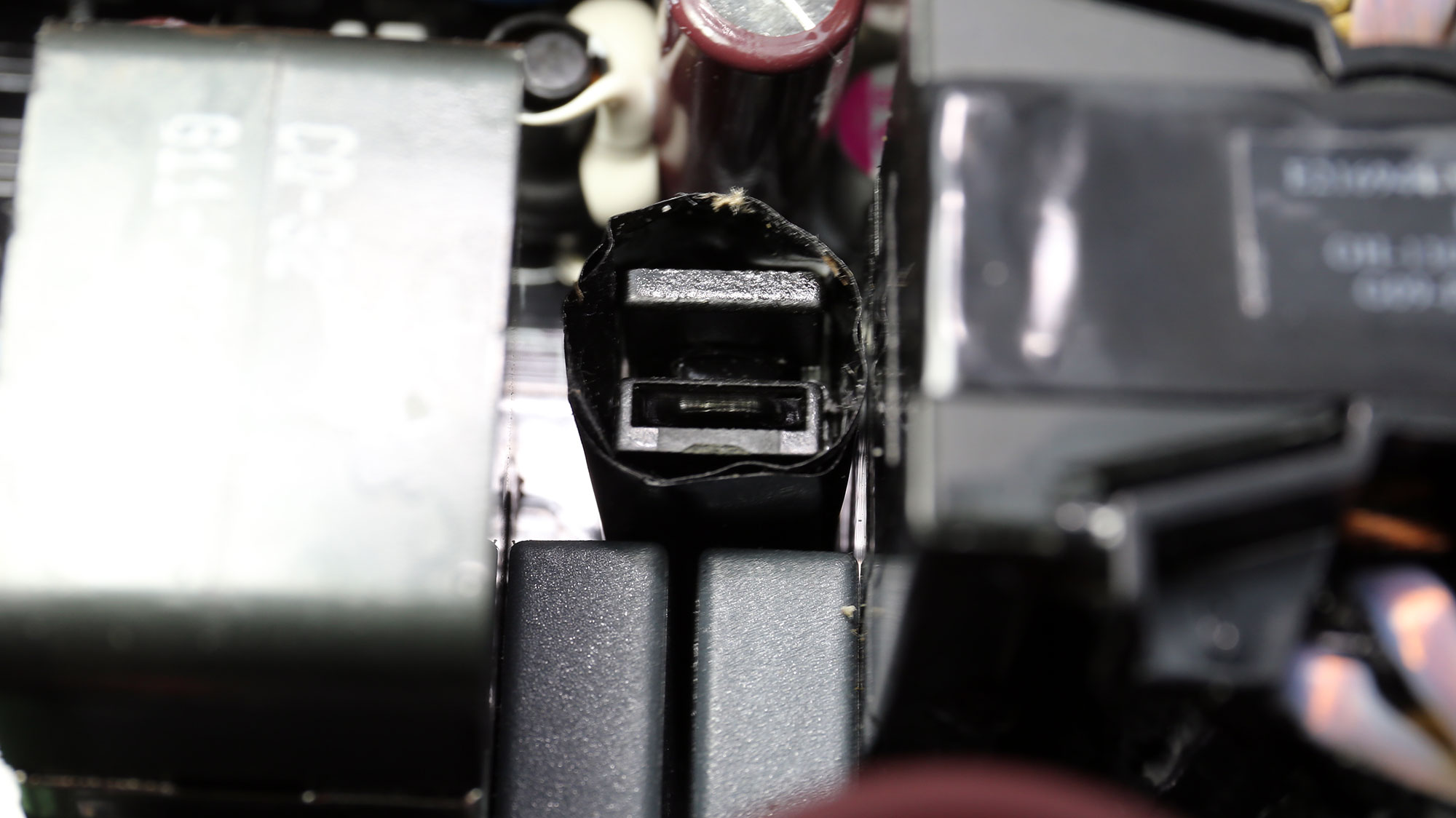
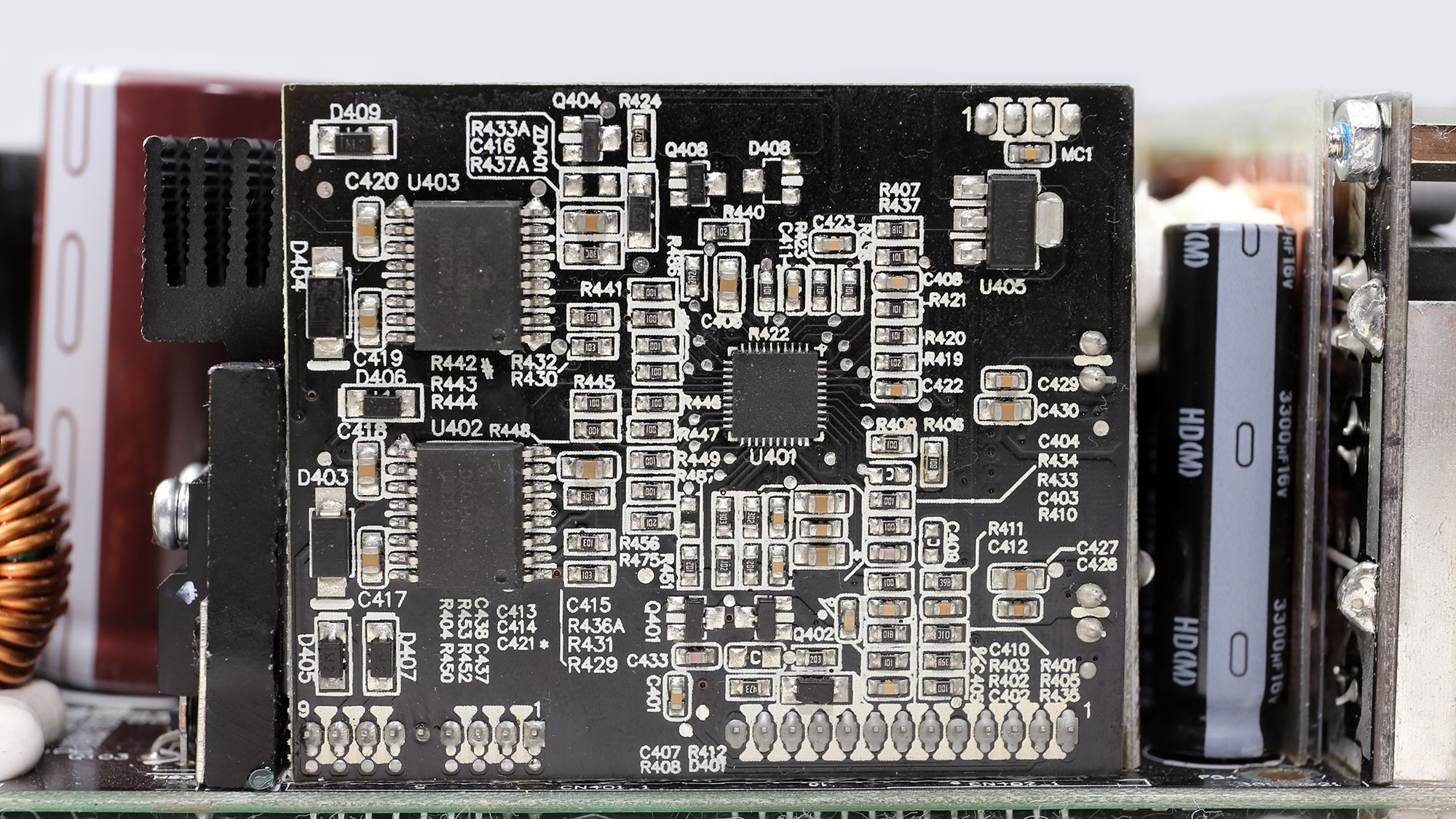
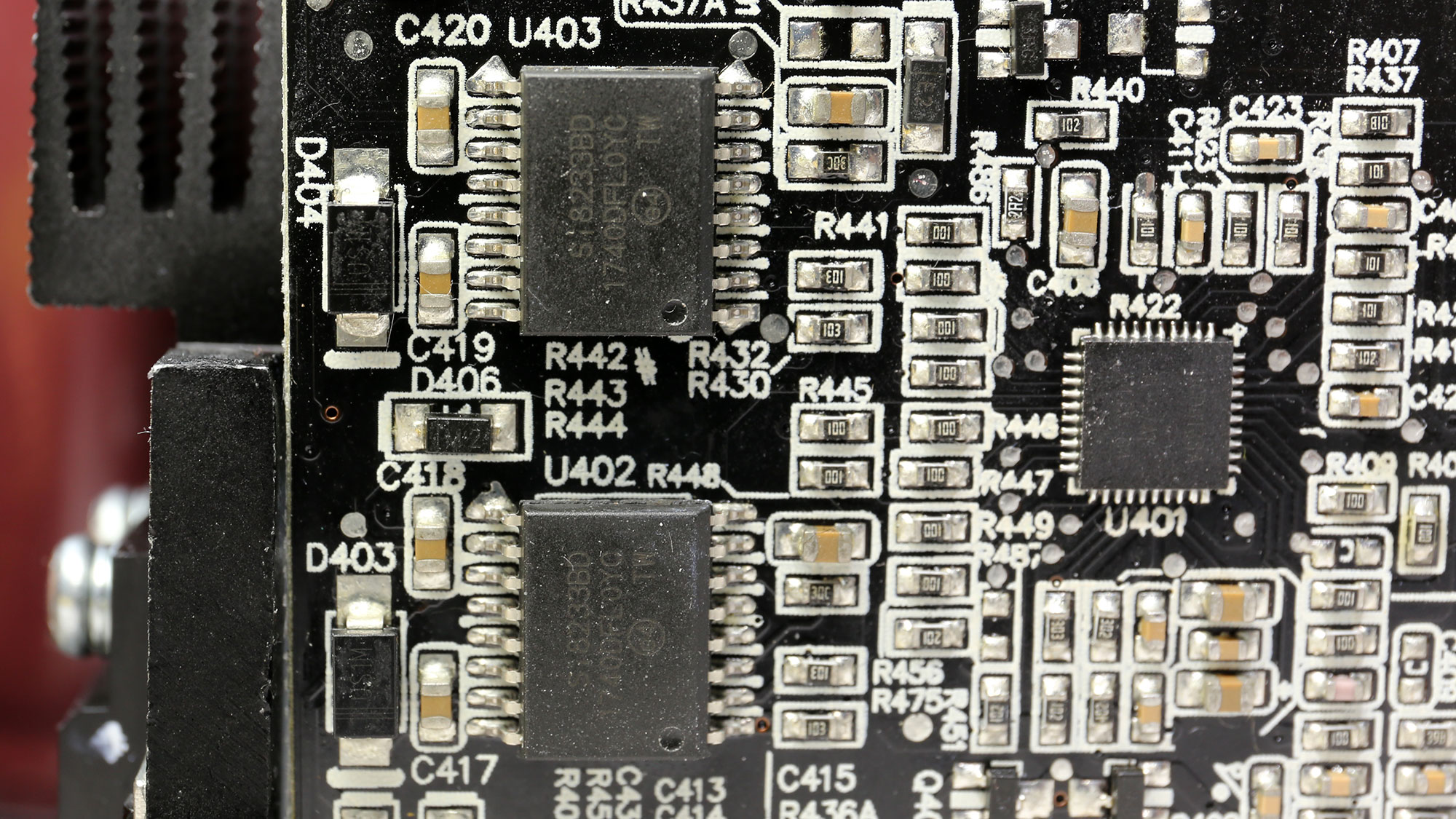
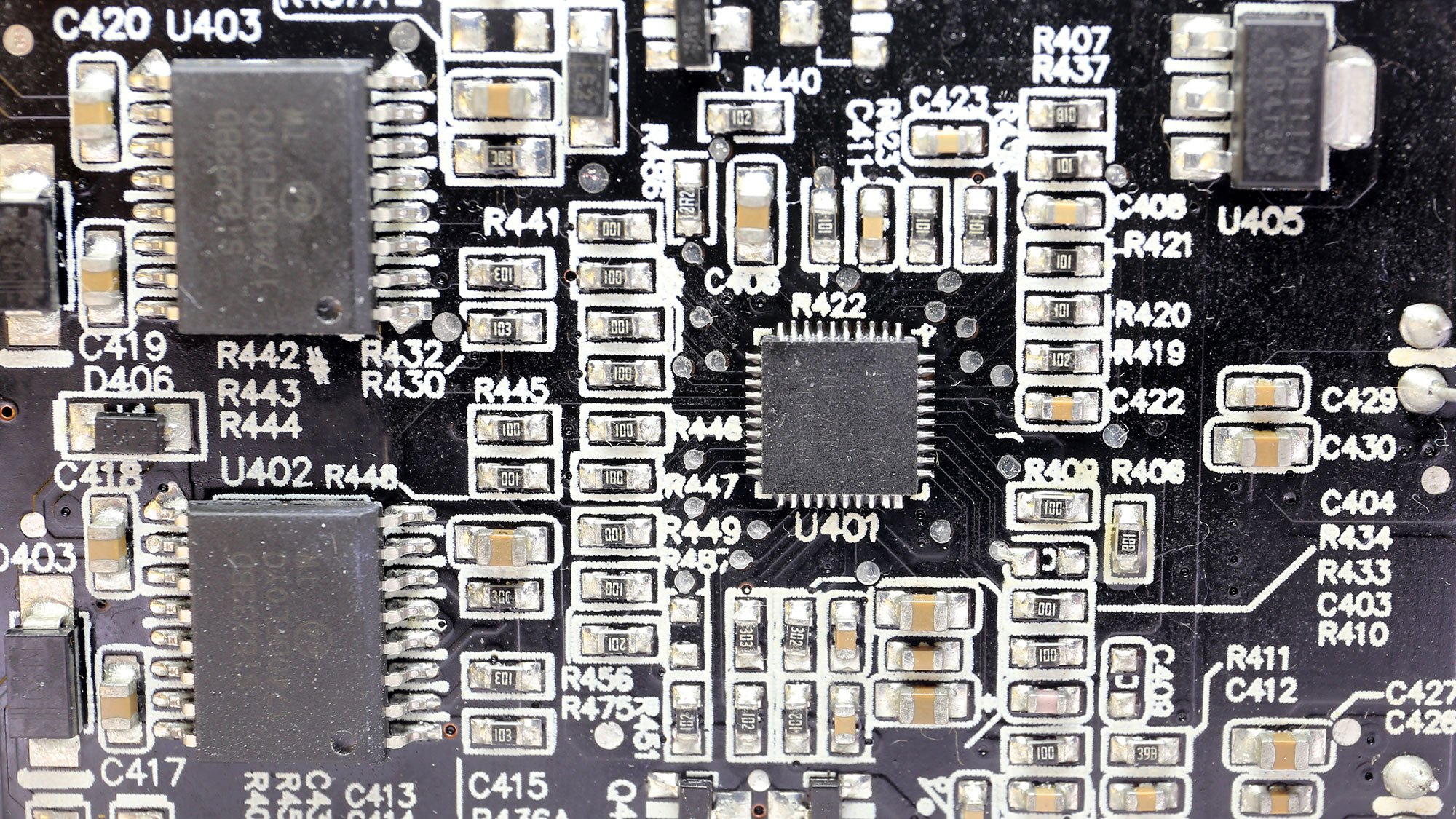
The primary switching FETs are configured in a full-bridge topology, and an LLC resonant converter restricts the energy losses.

12V FETs and VRMs
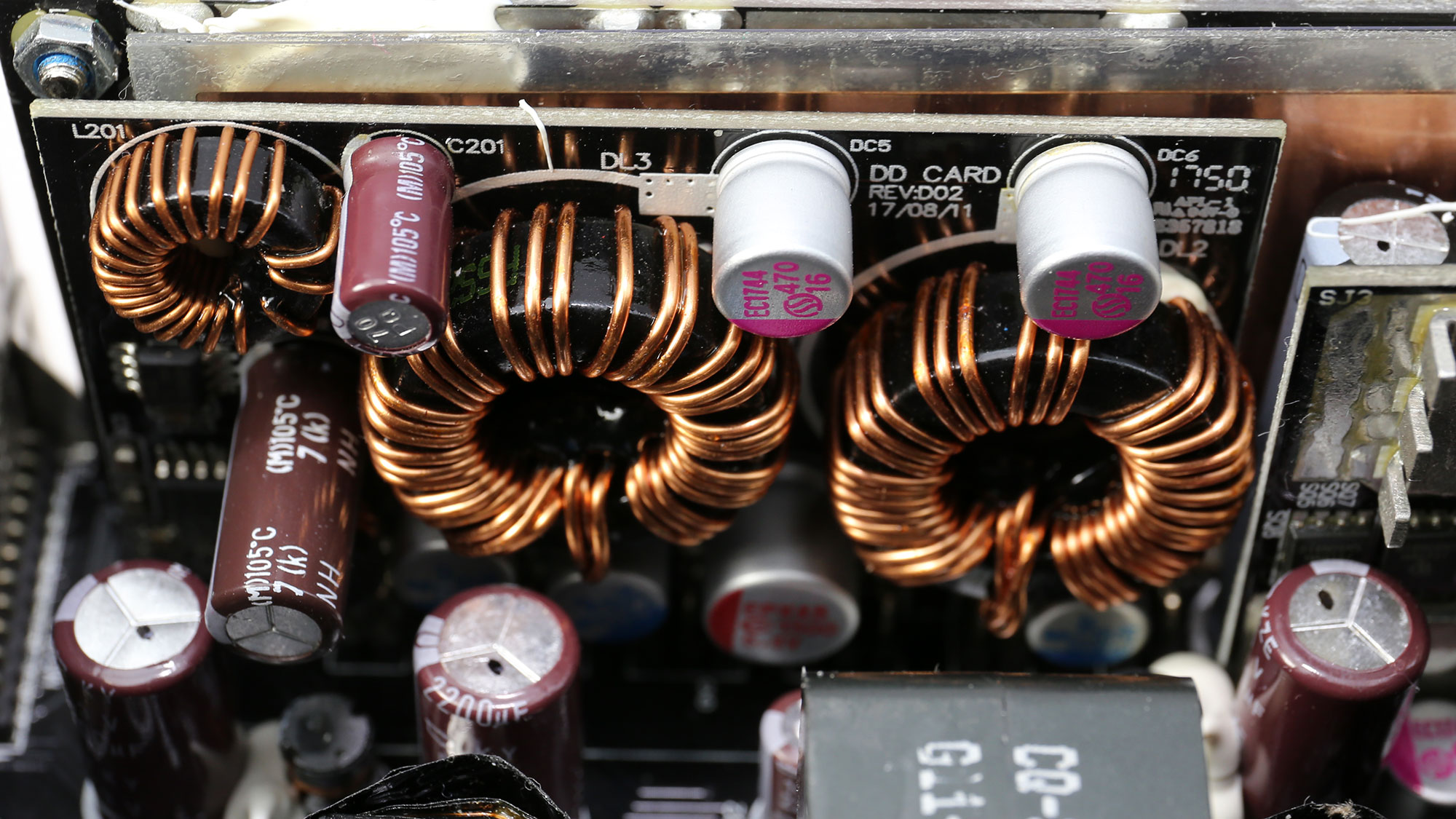
The board that hosts the +12V FETs are closely installed to the main transformer and is connected to the latter through a pair of thick cables.
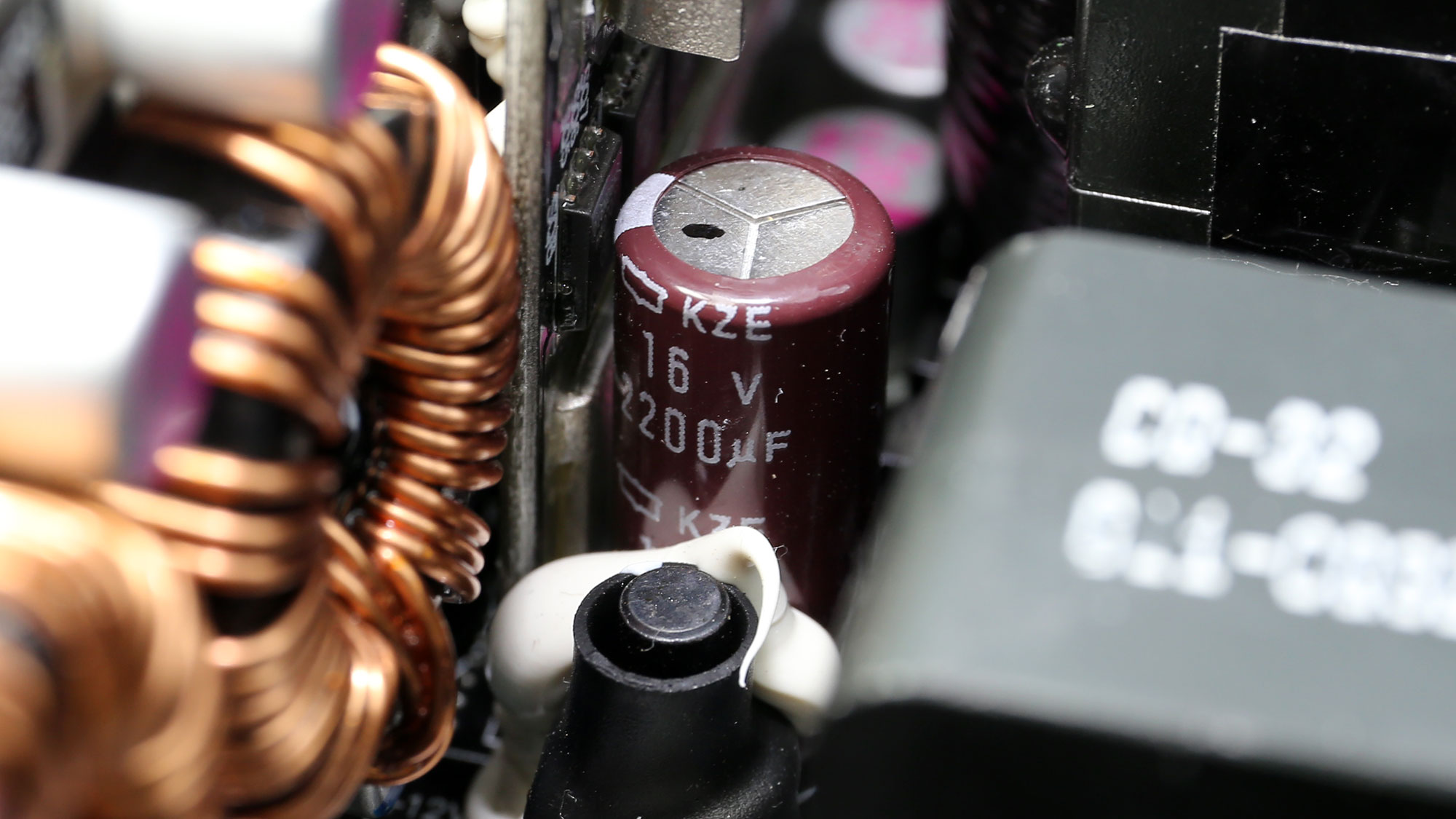
Most electrolytic caps belong to Chemi-Con's good KY line. We only found a single KZE cap and four Nichicons, with a high enough lifetime. Besides electrolytic caps, a large number of polymers is also used for ripple filtering. The majority of polymer caps belong to Taiwanese and Chinese brands. This is not a reliability problem, though, since this type of caps can withstand high operating temperatures without issues.

Modular board front
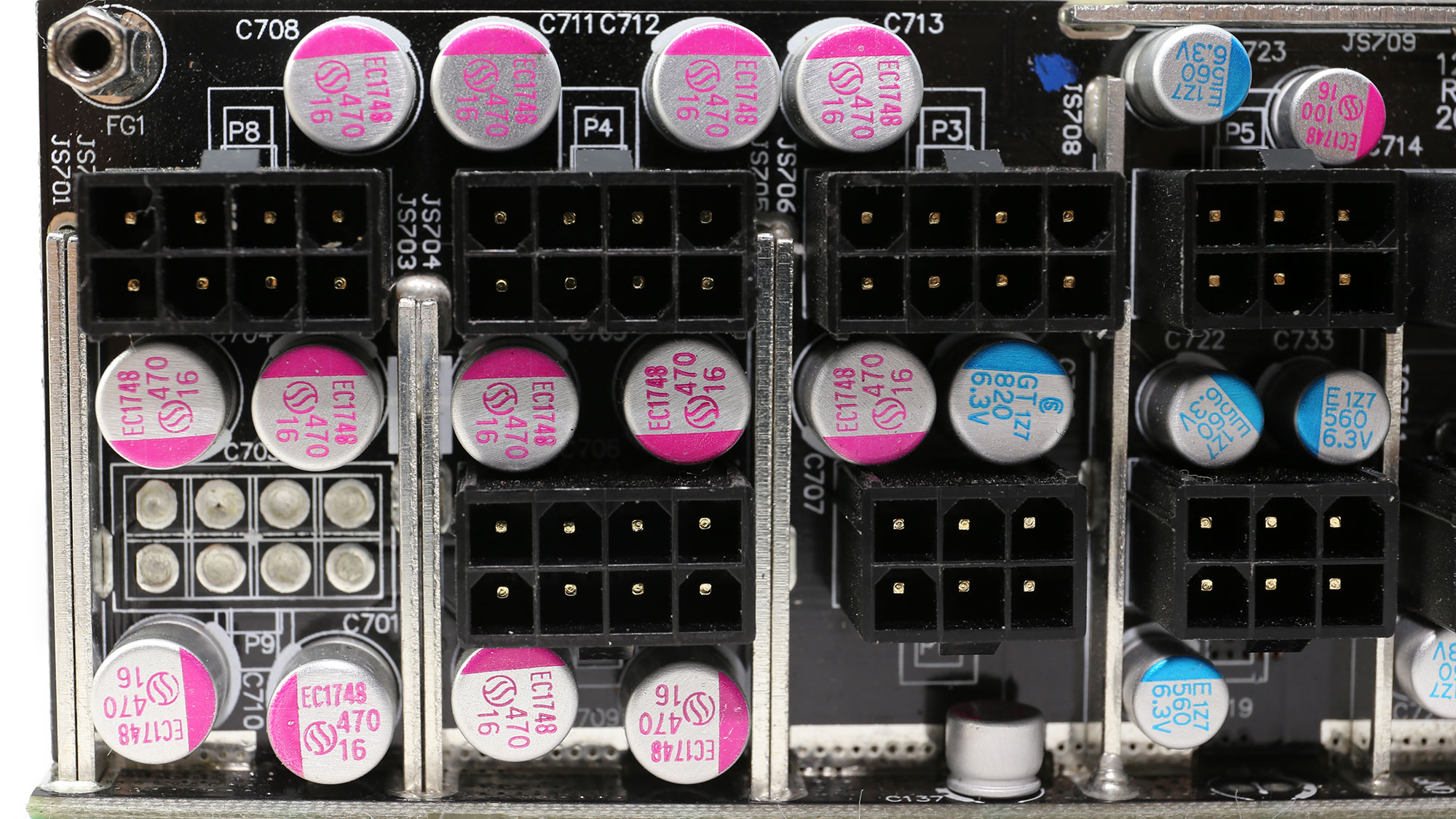
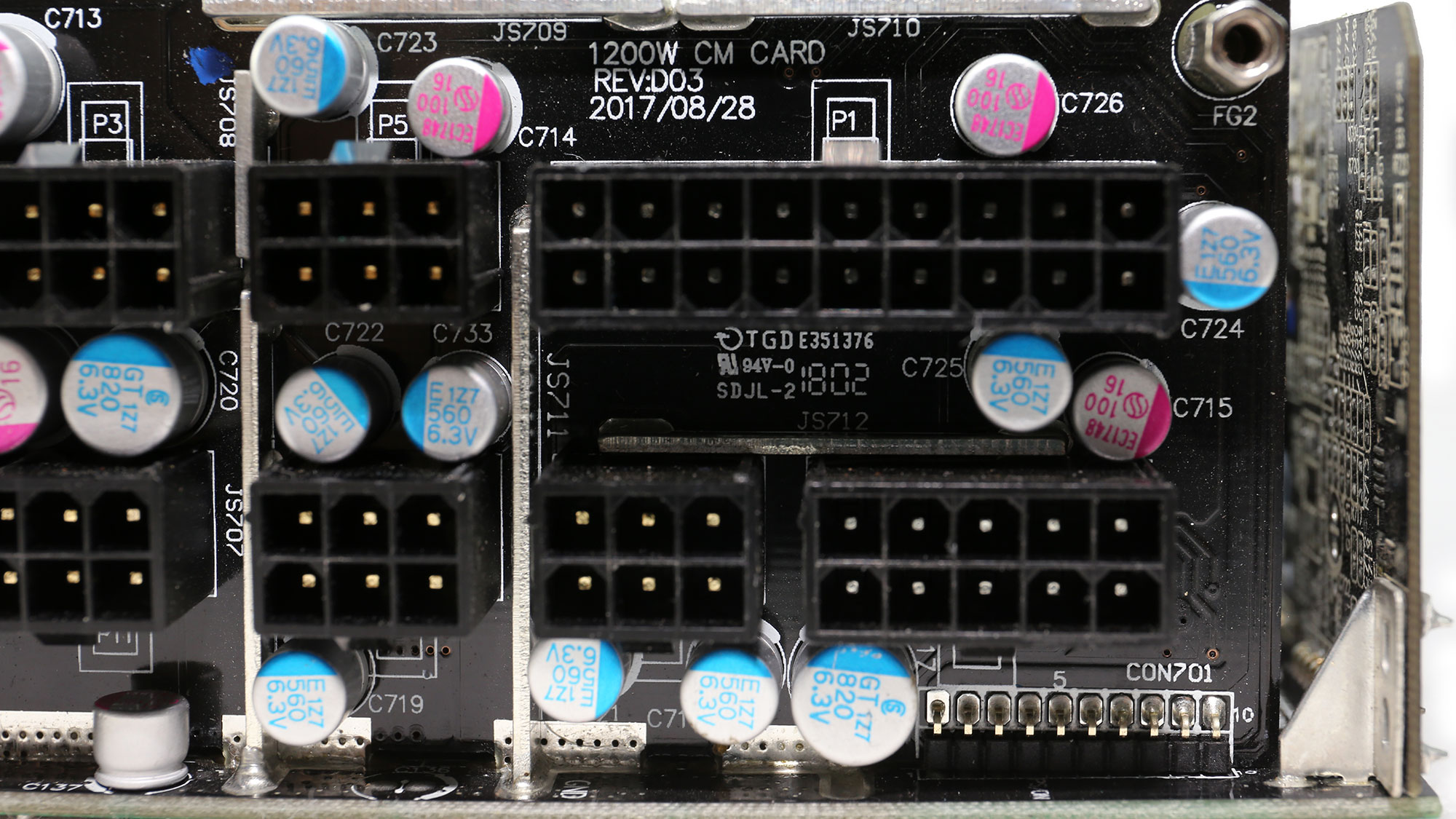
The face of the modular board is covered by polymer caps.
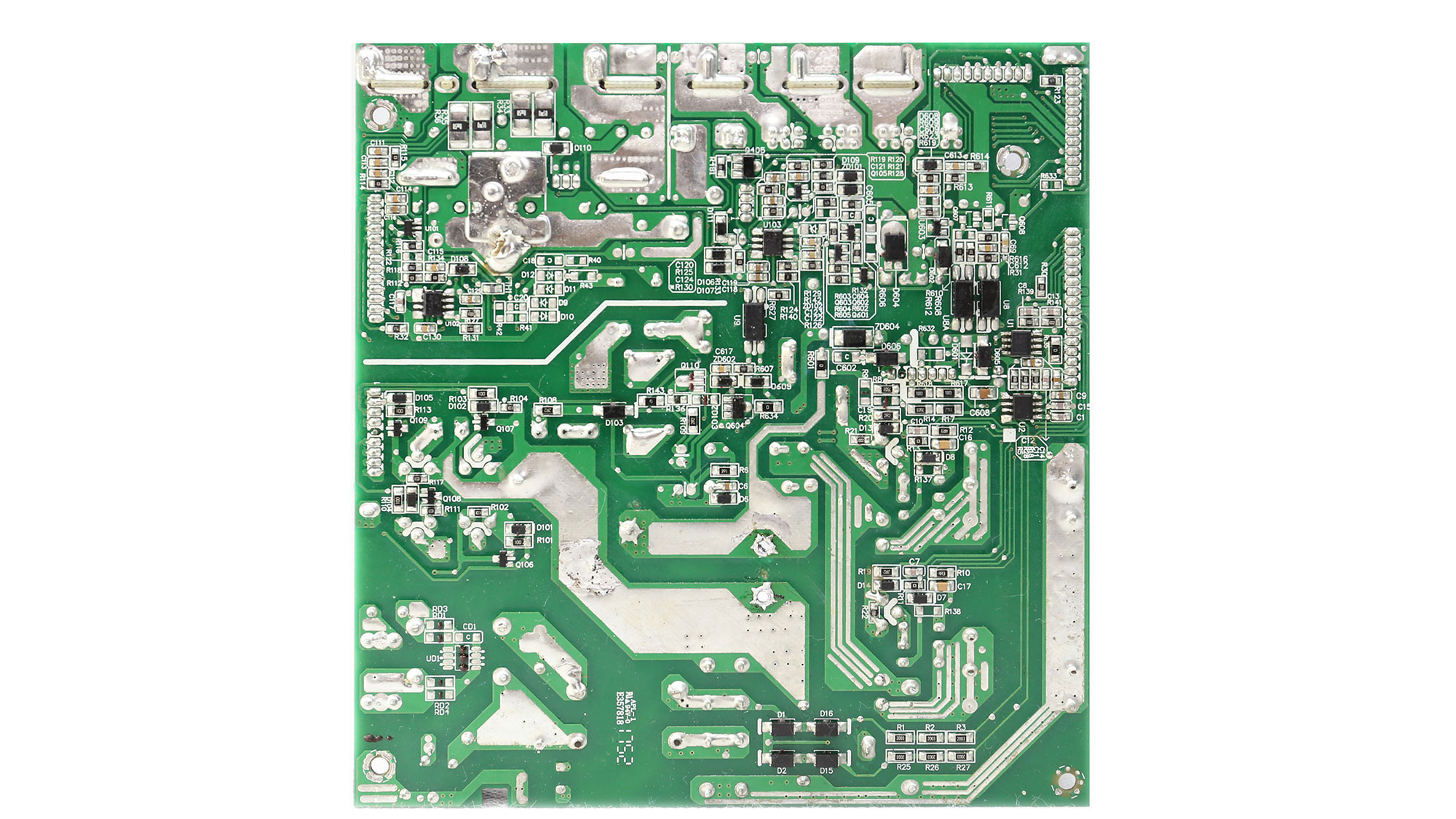
Soldering quality
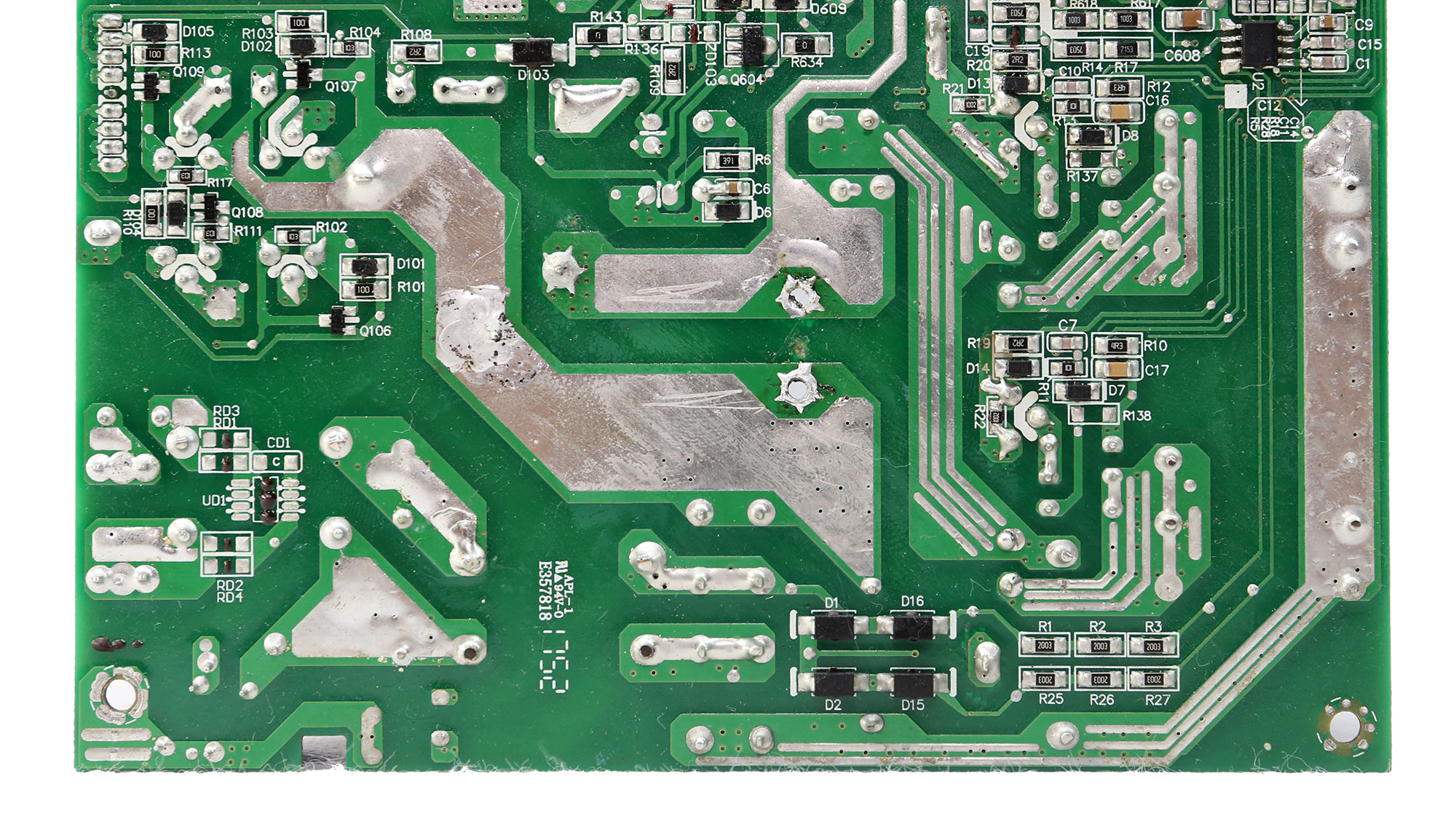
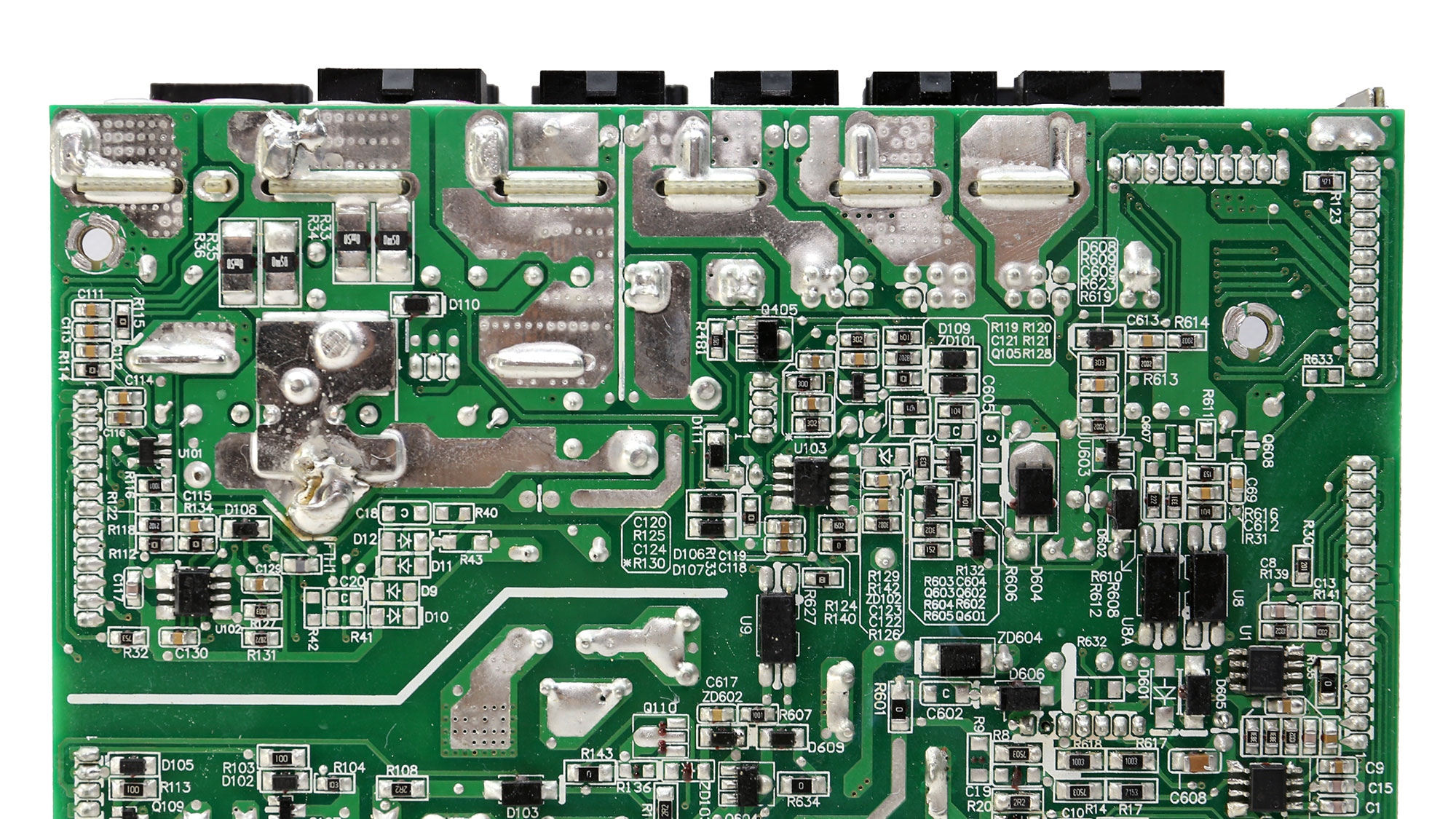
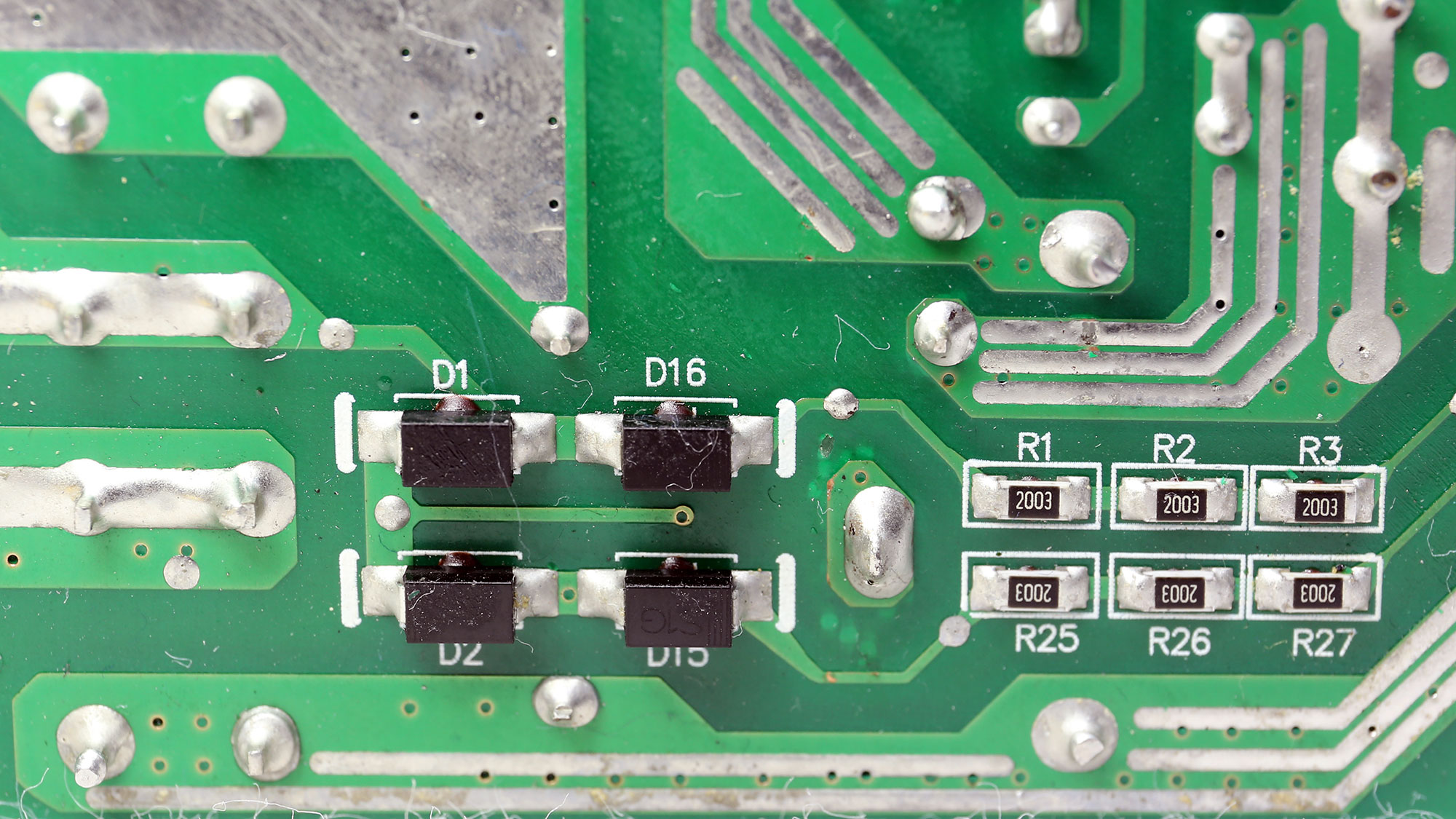

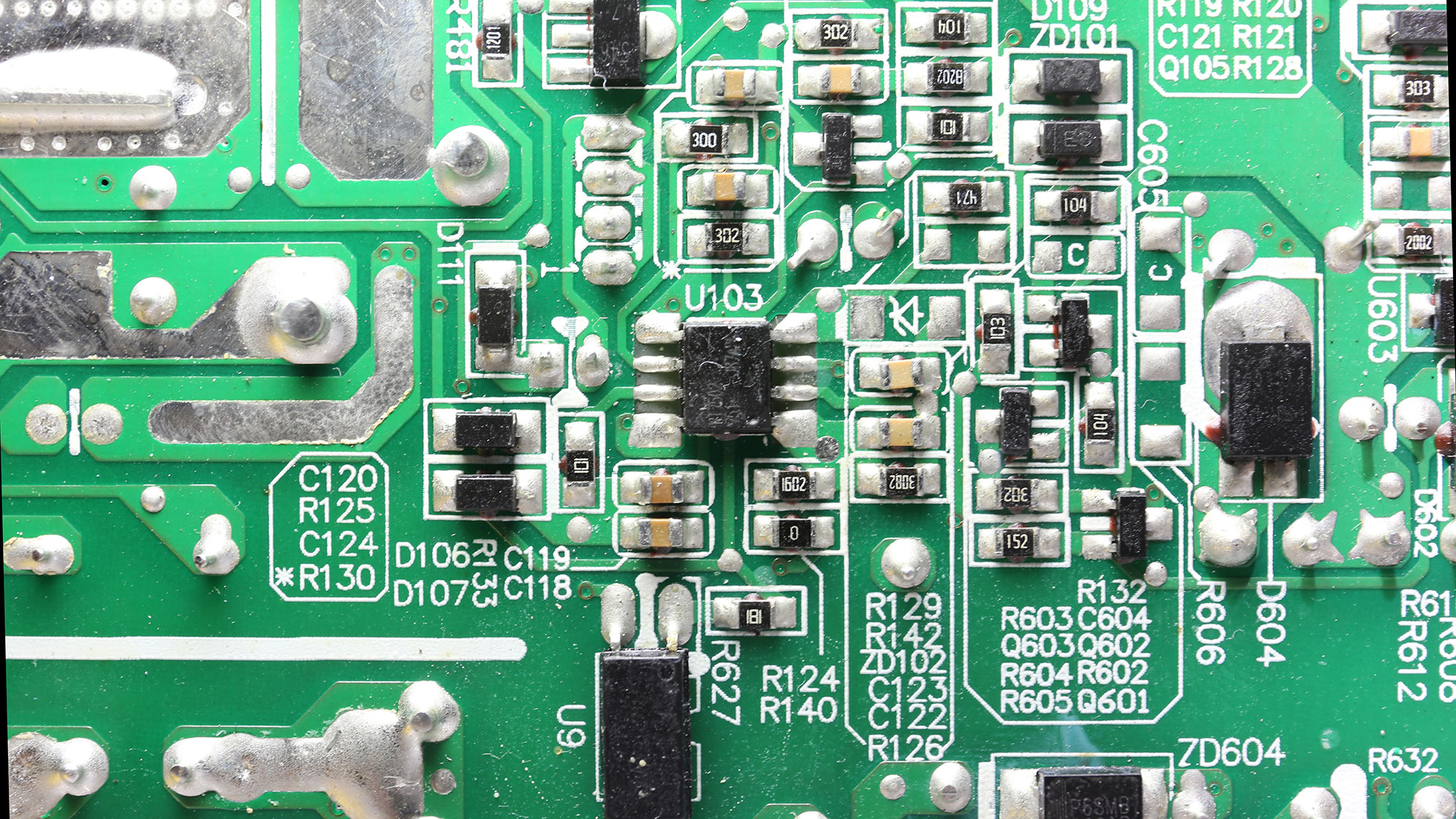
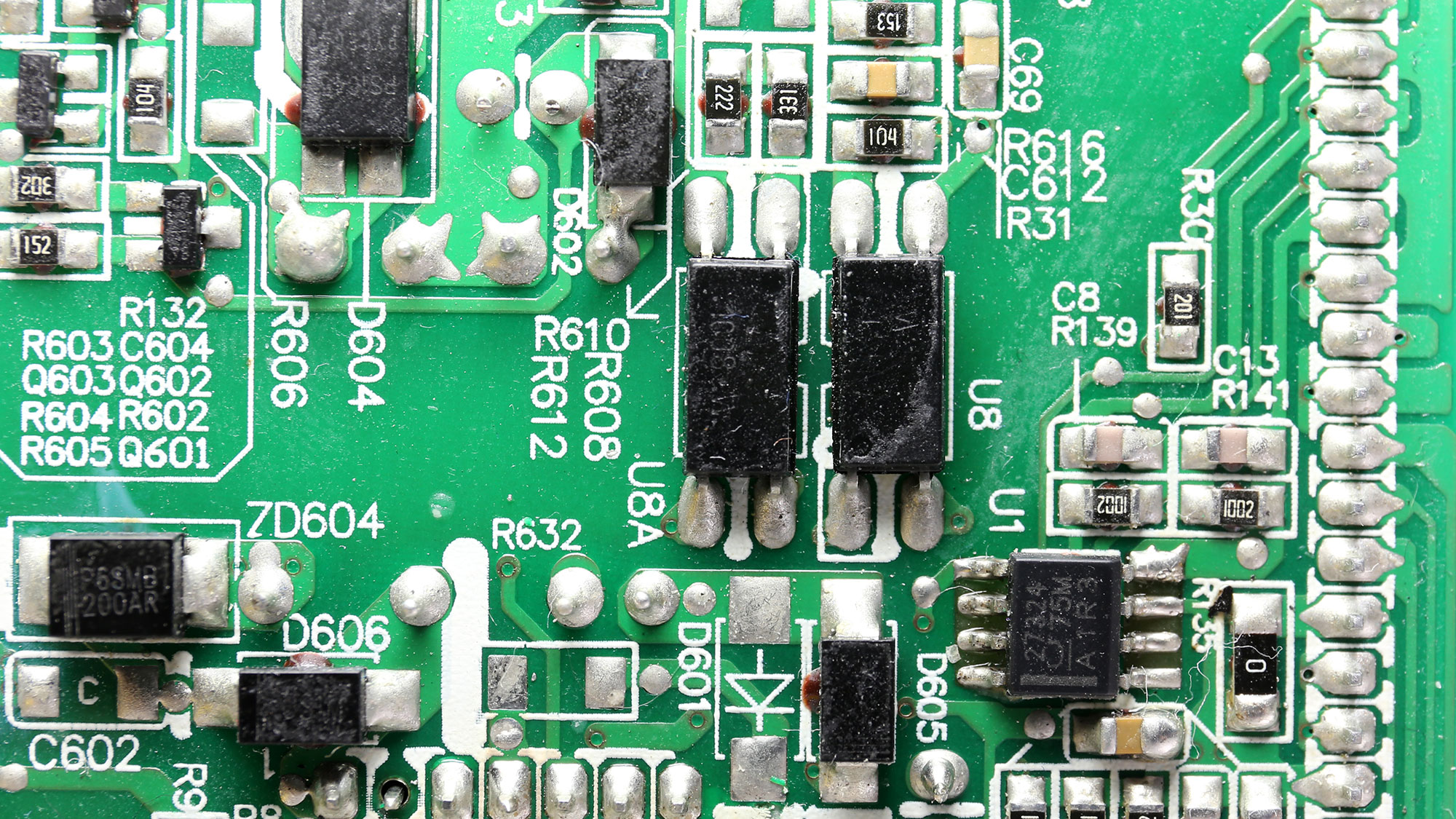
The soldering quality is good and all component leads have been carefully trimmed.
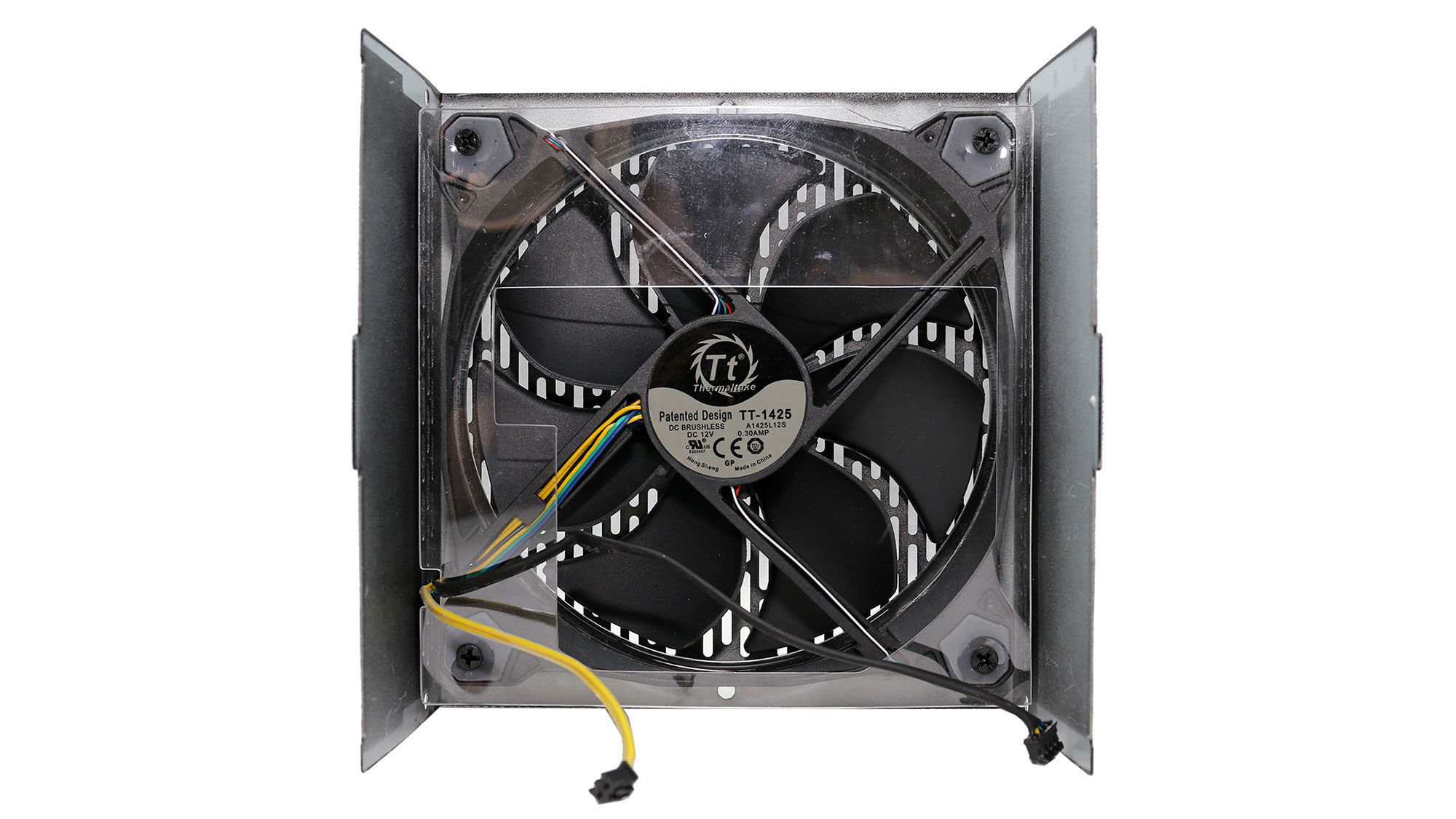
Cooling fan
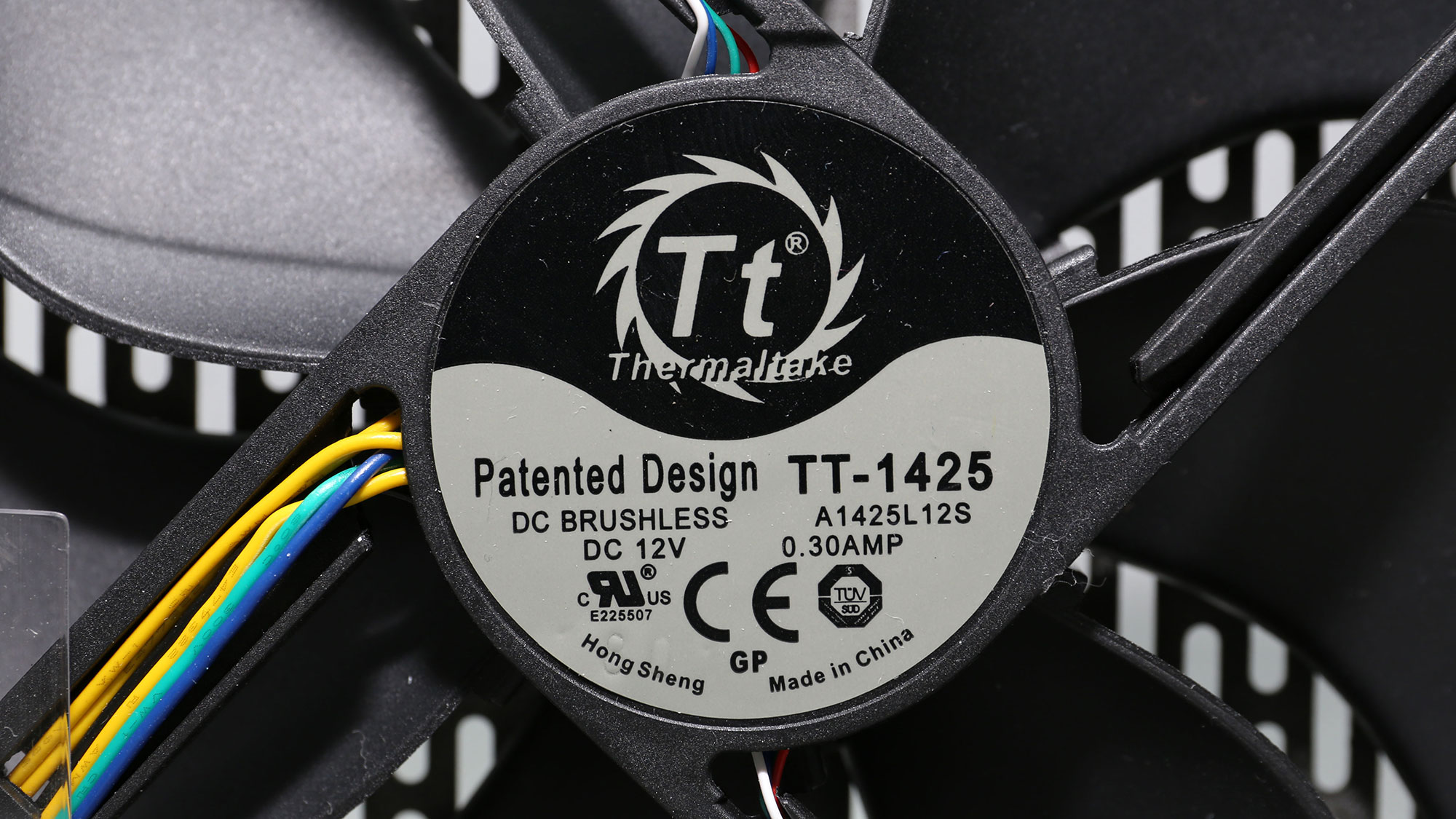
The cooling fan uses a hydrodynamic bearing, so it will have a long and trouble-free lifetime, as long as you keep the operating temperatures at normal levels. If you plan to use the PSU in harsh environments, a double-ball bearing fan will be more suitable but will also make more noise.
MORE: Best Power Supplies
MORE: How We Test Power Supplies
MORE: All Power Supply Content
Current page: Specifications and Part Analysis
Next Page Load Regulation, Hold-Up Time, Inrush Current, Efficiency and Noise
Aris Mpitziopoulos is a contributing editor at Tom's Hardware, covering PSUs.